
- Green Goals
- Recommender
- QATAR AIRWAYS
- Red Sea Global
- AMAZON PAYMENT SERVICES
- Most Innovative Companies 2023
- Fast Company Middle East’s annual ranking of businesses that are making an outsize impact
- Best Workplaces for Women Middle East 2023
- Most Creative People In Business 2023
- MOST CREATIVE PEOPLE IN BUSINESS 2022
- World Changing Ideas
- New workplaces, new food sources, new medicine–even an entirely new economic system
- 100 IDEAS THAT WILL SHAPE 2023
- Innovation by Design Summit
- The Green Goals Summit
- World Changing Ideas Middle East Summit
- FC Roundtable
- IMPACT COUNCIL
- RED SEA GLOBAL

CREATE A NEW ACCOUNT

- 04-01-24 | 1:00 pm
Tourism boom in Saudi Arabia, spending reaches $40 billion in 2023
This showcases a growth rate of 42.8%, as compared to 2022..

Until some years ago, Saudi Arabia was not the top-of-the-mind destination one thought of for historical exploration or luxurious leisure. But now, it is investing heavily in tourism and travel; the target is 10% of GDP by 2030 to be contributed by the tourism sector.
Several giga projects are in the pipeline, and many projects have opened up recently, including the Red Sea global tourism, the Qiddiya entertainment city, and the Diriyah Gate heritage development initiatives, along with the $500 billion giga-project, NEOM.
According to the latest data from the Saudi Central Bank, tourist spending reached a record high of $39.95 billion in 2023. This showcases a growth rate of 42.8%, as compared to 2022.
The report also outlined that the Gulf state experienced a recovery rate of 156% in the number of visitors during 2023 compared to 2019.
Moreover, the kingdom had surpassed its Vision 2030 target of attracting 100 million visitors seven years ahead of schedule, getting international acclaim from the World Tourism Organization (UN Tourism) and the World Travel and Tourism Council (WTTC.)
Following this, Saudi’s Minister of Tourism, Ahmed Al-Khateeb, announced in 2023 that the kingdom will raise its initial goal of attracting 100 million visitors by the end of the decade to 150 million .
Saudi Arabia has been witnessing many wins in its tourism sector.
In 2023, the kingdom made it to the top of the United Nations’ World Tourism Organization list for the growth rate of international tourist numbers compared to 2019.
The achievement marked a 56% increase in 2023 compared to 2019, as highlighted in the barometer report issued by the UNWTO in January 2024.
The Innovation By Design Summit is in Doha on April 24. Attendance at the summit is by invitation only. Delegates can register here to receive their exclusive invite.
Featured Videos
Issam Kazim on Dubai's quest to be the world's most visited destination | PART 1
Today's Top Stories:
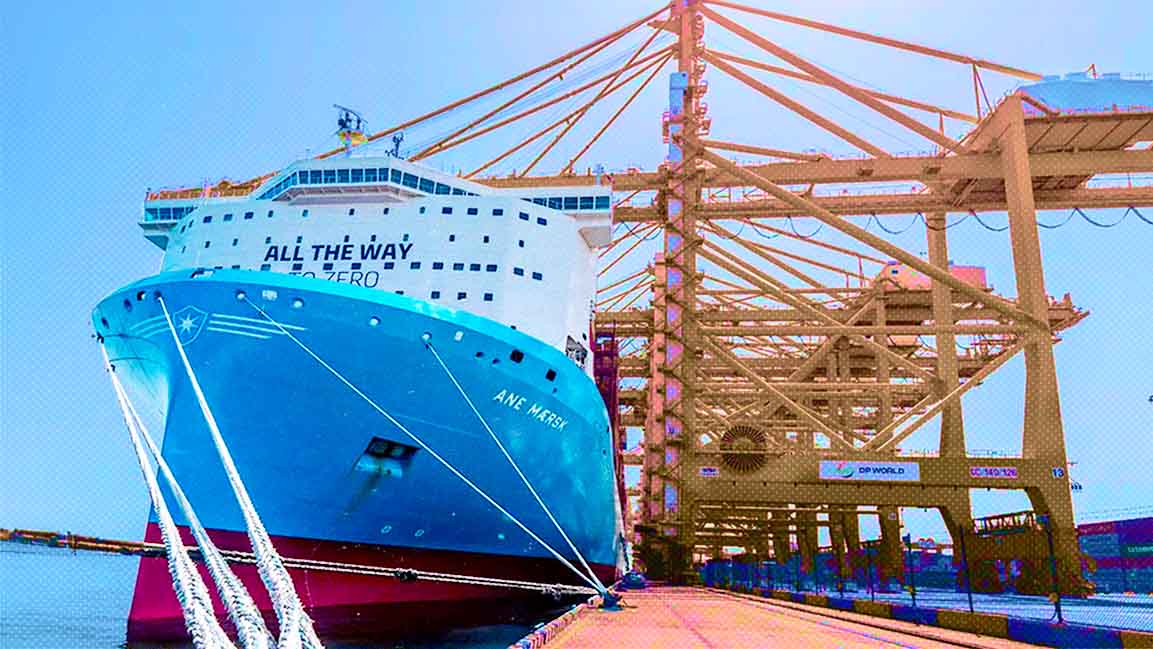
Dubai's DP World welcomes Ane Maersk, world's first green methanol vessel
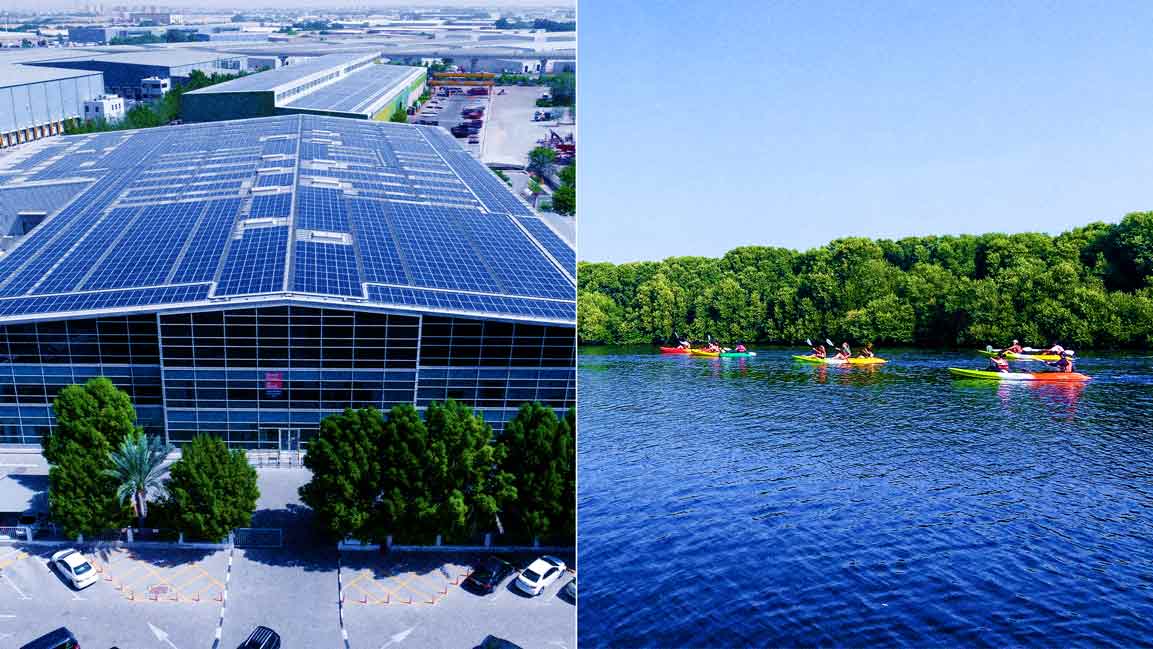
Chalhoub Group unveils 10th annual sustainability report 2023
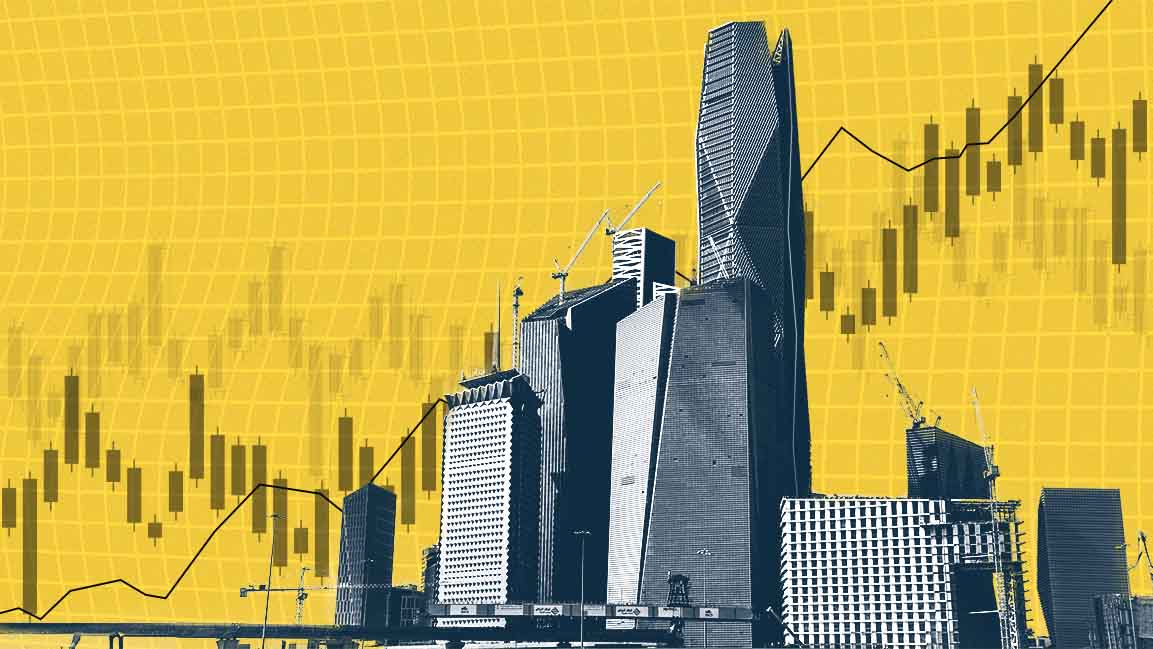
GCC off to strong start in 2024 raising $1.2 billion in IPOs

Saudi Arabia boosts manufacturing with $1.8 billion Q1 private sector investments

Where the human brain (still) has an edge over AI
More top stories:.

FROM OUR PARTNERS

Dubai’s DP World welcomes Ane Maersk, world’s first green methanol vessel
The vessel arrived at Jebel Ali port, the biggest port in the Middle East region and the 10th busiest in the world.

The group achieved 32% women’s representation in the Executive Leadership team and 33.3% at the boardroom level, with a target to reach 40% representation by 2030.

Saudi Arabia emerged as the leader in IPO activity, with nine successful listings
[pmpro_login show_menu=”true” show_logout_link=”true”] Create an Account
You can see how this popup was set up in our step-by-step guide: https://wppopupmaker.com/guides/auto-opening-announcement-popups/
Unparalleled Journalism. Start Your Subscription Today.
cancel anytime
Monthly Digital Access
$1.99 / month
Two Year Digital Access
Best Value $34.99 / year
Annual Digital Access
$19.99 / year
- Access to the award-winning journalism on fastcompany.com
- Delivery of the latest digital issue and access to the digital magazine archive
- The Fast Company app
- Insightful videos and webinars
- Exclusive coverage of the Fast Company franchises, including Most Innovative Companies, Innovation by Design, World Changing Ideas, and more
- Exploratory conversation with our weekly podcasts

Student subscriptions

Gift subscriptions

Group subscriptions
Have an inquiry? Visit our Help Center
[pmpro_levels]
Create a new account
Or continue with, reset password.
UN Tourism | Bringing the world closer
Share this content.
- Share this article on facebook
- Share this article on twitter
- Share this article on linkedin
UN Tourism Applauds Saudi Arabia's Historic Milestone of 100 Million Tourists
- All Regions
- 26 Feb 2024
In a testament to its strategic vision and robust sector growth, the Kingdom of Saudi Arabia has welcomed over 100 million tourists, marking a significant milestone in its journey to become a global tourism powerhouse.
In an exceptional achievement, the Kingdom of Saudi Arabia has welcomed over 100 million tourists , a milestone celebrated by the World Tourism Organization (UN Tourism). This remarkable accomplishment achieved seven years ahead of its original schedule, not only underscores Saudi Arabia's emergence as a global tourism powerhouse but also highlights its leading role in the economic diversification and sustainable development of the tourism sector worldwide. This milestone, marked by the arrival of over 27 million international tourists and over 79 million domestic tourists with a combined total spend of over USD 67 billion, not only showcases the Kingdom's robust tourism sector but also underscores the Saudi Ministry of Tourism's commitment to advanced data gathering and statistical analysis, a priority echoed by UN Tourism.
The Kingdom's success story is built on a foundation of strategic initiatives and reforms that have propelled its tourism sector to new heights. With a staggering 390% increase in demand for tourism activity licenses in 2023 and the contribution of tourism to the non-oil GVA estimated to exceed 7%, Saudi Arabia's vision for the future is clear. With the tourism sector's direct contribution to the GDP estimated to exceed 4 %, the country has showcased its resilience, innovation, and commitment to excellence.
Strategic Partnerships and Global Leadership
UN Tourism has closely collaborated with Saudi Arabia, recognizing its efforts in developing a robust tourism infrastructure and statistical analysis capabilities. The inauguration of UN Tourism's Regional Office for the Middle East in Riyadh in 2021 marked a significant step towards fostering tourism innovation, education, and rural development. This partnership has been instrumental in positioning Saudi Arabia as a leader in sustainable tourism practices and statistical excellence.
Elevating its global position in the tourism sector, Saudi Arabia has distinguished itself by leading the G20 in international tourist growth rate in 2023 compared to 2019. This recognition underlines the Kingdom's pivotal role in the global tourism sector's recovery following the pandemic. Moreover, the Middle East has emerged as the sole region not only to rebound but also to outpace pre-pandemic tourism levels , with a 122 percent recovery in international tourist arrivals in 2023 compared to 2019. At the forefront of this remarkable growth, Saudi Arabia witnessed a staggering 156 percent recovery in international tourist arrivals compared to 2019, underscoring its central role in the region's tourism boom.
A Testament to Resilience and Innovation
The Kingdom's tourism sector has shown remarkable resilience, with inbound spending reaching over USD 37 billion in 2023 and a significant increase in hotel keys across the kingdom. These achievements are a testament to Saudi Arabia's commitment to creating a prosperous and sustainable tourism sector.
Empowering the Workforce
The employment opportunities created by the tourism sector are a cornerstone of Saudi Arabia's success. As of 2023, with 925.5 thousand jobs in the tourism sector and significant investments in training, the Kingdom is on track to make tourism the second-largest employer by 2030. This focus on workforce development ensures that the benefits of tourism growth are shared widely and sustainably.
Gratitude and Future Vision
UN Tourism extends its congratulations to the Kingdom of Saudi Arabia for this historic achievement. We commend the leadership, the Ministry of Tourism, and all partners for their unwavering support and dedication. As Saudi Arabia continues to drive towards its goal of 150 million tourists by 2030, UN Tourism looks forward to supporting its journey, celebrating its successes, and promoting a more resilient, sustainable, and inclusive future for global tourism.
Saudi Arabia's achievement of welcoming over 100 million tourists in 2023 is a beacon of what is possible through collaboration, innovation, and a clear vision for the future. The Kingdom not only promises a diverse and rich tourism experience but delivers on that promise, paving the way for a brighter future for the global tourism industry.
Related links:
- Download the News Release on PDF
- International Tourism to Reach Pre-Pandemic Levels in 2024
Related Content
Un tourism puts spotlight on investments and empowermen..., un tourism calls for cross-cultural dialogue and climat..., un tourism and icca partner around sustainable developm..., un tourism launches women in tech startup competition: ....

Tourism boom: Saudi Arabia’s international visitor numbers soar 142%
More tourists than ever before are visiting the Kingdom of Saudi Arabia as inbound visitor numbers have more than doubled since 2022

More international tourists than ever before are visiting the Kingdom of Saudi Arabia with visitor numbers surging by 142% in the first half of 2023, surpassing 14 million people.
This is according to data released by Saudi Arabia’s Ministry of Tourism, which this week announced preliminary tourism statistics data for the first half of 2023.
Breaking down the figures further, the ministry said that the total number of tourists reached 53.6 million for the year, but that of these 39 million were domestic tourists while the rest (14.6 million) were international tourists.
What’s more interesting is that tourism spending is also on the rise.
“The total tourism spending reached (SAR150bn), of which (SAR 63.1bn) came from domestic tourism and (SAR 86.9bn) from inbound tourism, that indicates a new historical record for Saudi tourism,” said the ministry in a statement.
“Domestic tourism in the first half of 2023 recorded a growth of (16%) in tourism spending, due to the average length of stay increasing from (4.6) nights in the first half of 2022 to (6.3) nights in the first half of 2023,” noted the ministry.
Officials went on further to say that leisure was the top reason for tourist’s visits, achieving an increase of (18%) compared to the first half 2022, with (16.6 million) tourists accounting for (43%) of all domestic tourists’ trips.
Every 51st resident in Dubai is a millionaire, reveals World’s Wealthiest Cities report
Atm 2024: uae reveals details of gcc’s schengen-styled ‘grand tours’ visa, gulf business may 2024 roundup: mastercard, supercar blondie and more, latest issue.
- Saudi Arabia
- Real Estate
- Special Report
- Art & Culture
Advertise With Us
Privacy policy.
© 2021 MOTIVATE MEDIA GROUP. ALL RIGHTS RESERVED.
Travel, Tourism & Hospitality
Tourism industry in Saudi Arabia - statistics & facts
Saudi arabia’s tourism revolution, entertainment and media fueling the tourism boom, key insights.
Detailed statistics
Total inbound tourist expenditure Saudi Arabia 2015-2022
Total inbound tourist expenditure Saudi Arabia 2021, by province
Share of tourist trips Saudi Arabia 2022, by purpose
Editor’s Picks Current statistics on this topic
Current statistics on this topic.
Number of Hajj pilgrims in Saudi Arabia 1999-2023
Share of travel and tourism contribution to GDP in Saudi Arabia 2015-2032
Leading inbound travel markets from Middle East Saudi Arabia 2022
Related topics
Recommended.
- Hotel industry in Saudi Arabia
- Hotel industry in GCC
- Tourism industry in UAE
- Tourism industry in Qatar
Recommended statistics
Regional overview.
- Basic Statistic Inbound visitor growth in the Middle East 2011-2025
- Basic Statistic Outbound visitor growth in the Middle East 2011-2025
- Premium Statistic Targets of international tourist arrivals GCC 2023, by country
- Premium Statistic Expected revenue of hospitality industry in the GCC 2026, by country
- Premium Statistic Expected revenue of hospitality industry in the GCC 2021-2026, by country
Inbound visitor growth in the Middle East 2011-2025
Inbound visitor growth in the Middle East from 2011 to 2025
Outbound visitor growth in the Middle East 2011-2025
Outbound visitor growth in the Middle East from 2011 to 2025
Targets of international tourist arrivals GCC 2023, by country
Targets for international tourist arrivals in the Gulf Cooperation Council as of 2023, by country
Expected revenue of hospitality industry in the GCC 2026, by country
Forecasted share of the hospitality revenue in the Gulf Cooperation Council in 2026, by country
Expected revenue of hospitality industry in the GCC 2021-2026, by country
Forecasted revenue of the hospitality industry in the Gulf Cooperation Council in 2021 and 2026, by country (in billion U.S. dollars)
Economic indicators
- Premium Statistic Share of the GDP of the tourism sector in Saudi Arabia 2013-2028
- Premium Statistic Total inbound tourist expenditure Saudi Arabia 2015-2022
- Premium Statistic Outbound tourism expenditures Saudi Arabia 2018-2022
- Premium Statistic Domestic tourist expenditure Saudi Arabia 2018-2022
- Premium Statistic Distribution of inbound tourist spending Saudi Arabia 2022, by purpose of visit
- Premium Statistic Outbound tourist spending Saudi Arabia 2022, by purpose of visit
Share of the GDP of the tourism sector in Saudi Arabia 2013-2028
Share of the GDP of the tourism sector in Saudi Arabia from 2013 to 2028
Total inbound tourist expenditure in Saudi Arabia from 2015 to 2022 (in billion Saudi riyals)
Outbound tourism expenditures Saudi Arabia 2018-2022
Outbound tourism expenditures in Saudi Arabia from 2018 to 2022 (in billion Saudi Riyals)
Domestic tourist expenditure Saudi Arabia 2018-2022
Domestic tourist expenditure in Saudi Arabia from 2018 to 2022 (in billion Saudi riyals)
Distribution of inbound tourist spending Saudi Arabia 2022, by purpose of visit
Distribution of inbound tourist expenditure in Saudi Arabia in 2022, by purpose of visit
Outbound tourist spending Saudi Arabia 2022, by purpose of visit
Expenditure of outbound tourists from Saudi Arabia in 2022, by purpose of visit (in billion Saudi riyals)
Types of tourism
- Premium Statistic Distribution of inbound tourist trips Saudi Arabia 2022, by purpose of visit
- Premium Statistic Total inbound tourist trips Saudi Arabia 2022, by purpose
- Premium Statistic Number of leisure inbound tourist trips Saudi Arabia 2015-2022
- Premium Statistic Total outbound tourist trips in 2022, by purpose and nationality
- Premium Statistic Number of outbound leisure tourist trips Saudi Arabia 2022, by country
- Premium Statistic Total domestic tourist trips Saudi Arabia 2022, by purpose
Distribution of inbound tourist trips Saudi Arabia 2022, by purpose of visit
Distribution of inbound tourist trips to Saudi Arabia in 2022, by purpose of visit
Total inbound tourist trips Saudi Arabia 2022, by purpose
Total inbound tourist trips in Saudi Arabia in 2022, by purpose (in millions)
Number of leisure inbound tourist trips Saudi Arabia 2015-2022
Number of leisure inbound tourist trips in Saudi Arabia from 2015 to 2022 (in 1,000s)
Total outbound tourist trips in 2022, by purpose and nationality
Number of Saudi and non-Saudi outbound tourist trips in Saudi Arabia in 2022, by purpose (in 1,000s)
Number of outbound leisure tourist trips Saudi Arabia 2022, by country
Number of outbound leisure tourist trips from Saudi Arabia in 2022, by destination country (in thousands)
Total domestic tourist trips Saudi Arabia 2022, by purpose
Total domestic tourist trips in Saudi Arabia in 2022, by purpose (in millions)
Inbound tourism
- Premium Statistic Number of inbound tourists Saudi Arabia 2018-2022
- Premium Statistic Total number of inbound tourists Saudi Arabia 2022, by region of origin
- Premium Statistic Number of inbound tourists Saudi Arabia 2022, by country of origin
- Premium Statistic Leading cities in inbound tourist arrivals Saudi Arabia 2022, by city
- Premium Statistic Share of inbound tourists Saudi Arabia 2022, by accommodation
- Premium Statistic Average length of stay of inbound tourists Saudi Arabia 2015-2022
Number of inbound tourists Saudi Arabia 2018-2022
Number of inbound tourists to Saudi Arabia from 2018 to 2022 (in millions)
Total number of inbound tourists Saudi Arabia 2022, by region of origin
Total number of inbound tourists in Saudi Arabia in 2022, by region of origin (in millions)
Number of inbound tourists Saudi Arabia 2022, by country of origin
Number of inbound tourists to Saudi Arabia in 2022, by country of origin (in millions)
Leading cities in inbound tourist arrivals Saudi Arabia 2022, by city
Number of inbound tourist arrivals to leading destinations in Saudi Arabia in 2022, by city (in millions)
Share of inbound tourists Saudi Arabia 2022, by accommodation
Share of inbound tourists in Saudi Arabia in 2022, by accommodation type
Average length of stay of inbound tourists Saudi Arabia 2015-2022
Average length of stay of inbound tourists in Saudi Arabia from 2015 to 2022 (in nights)
Outbound tourism
- Premium Statistic Number of outbound departures from Saudi Arabia 2015-2022
- Premium Statistic Total outbound tourist trips Saudi Arabia 2022, by region and nationality
- Premium Statistic Share of outbound Saudi tourist trips Saudi Arabia 2022, by destination country
- Premium Statistic Share of outbound non-Saudi tourist trips Saudi Arabia 2022, by destination
- Premium Statistic Share of Saudi outbound tourists Saudi Arabia 2022, by accommodation type
- Premium Statistic Share of non-Saudi outbound tourists Saudi Arabia 2022, by accommodation type
Number of outbound departures from Saudi Arabia 2015-2022
Number of outbound tourists from Saudi Arabia from 2015 to 2022 (in millions)
Total outbound tourist trips Saudi Arabia 2022, by region and nationality
Total outbound tourist trips in Saudi Arabia in 2022, by region and nationality (in millions)
Share of outbound Saudi tourist trips Saudi Arabia 2022, by destination country
Share of outbound trips of Saudi nationals in Saudi Arabia in 2022, by destination country
Share of outbound non-Saudi tourist trips Saudi Arabia 2022, by destination
Share of outbound trips of non-Saudi residents in Saudi Arabia in 2022, by destination country
Share of Saudi outbound tourists Saudi Arabia 2022, by accommodation type
Share of Saudi outbound tourists from Saudi Arabia in 2022, by accommodation type
Share of non-Saudi outbound tourists Saudi Arabia 2022, by accommodation type
Share of non-Saudi outbound tourists from Saudi Arabia in 2022, by accommodation type
Domestic tourism
- Premium Statistic Number of domestic tourists Saudi Arabia 2018-2022
- Premium Statistic Leading cities in domestic tourist trips Saudi Arabia 2022, by city
- Premium Statistic Number of domestic Hajj pilgrims in Saudi Arabia 1999-2023
- Premium Statistic Share of domestic tourists Saudi Arabia 2022, by accommodation
Number of domestic tourists Saudi Arabia 2018-2022
Number of domestic tourists in Saudi Arabia from 2018 to 2022 (in millions)
Leading cities in domestic tourist trips Saudi Arabia 2022, by city
Number of domestic tourist trips to leading destinations in Saudi Arabia in 2022, by city (in millions)
Number of domestic Hajj pilgrims in Saudi Arabia 1999-2023
Annual number of domestic Hajj pilgrims within Saudi Arabia from 1999 to 2023
Share of domestic tourists Saudi Arabia 2022, by accommodation
Share of domestic tourists in Saudi Arabia in 2022, by accommodation type
Further reports Get the best reports to understand your industry
Get the best reports to understand your industry.
- Hotel industry worldwide
Mon - Fri, 9am - 6pm (EST)
Mon - Fri, 9am - 5pm (SGT)
Mon - Fri, 10:00am - 6:00pm (JST)
Mon - Fri, 9:30am - 5pm (GMT)

Saudi Arabia’s Tourism Sector Hits Record High with $36 billion USD Inbound Spending in 2023
Saturday, March 30, 2024 Favorite
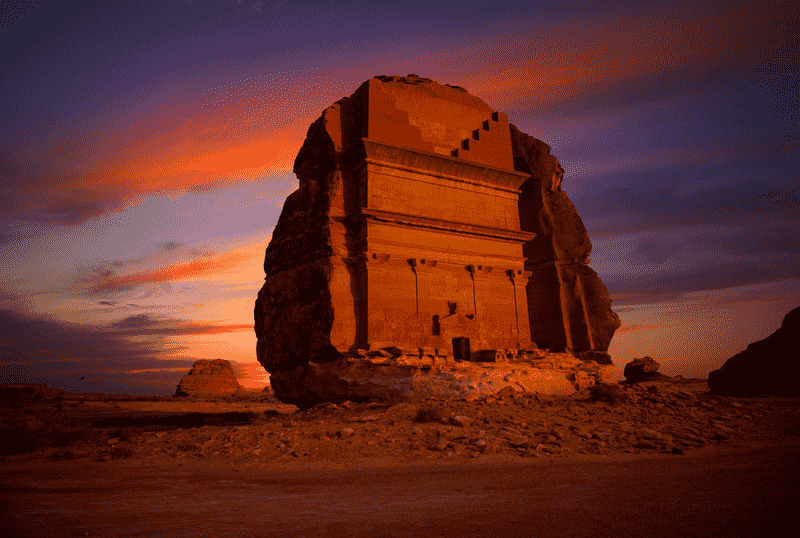
In 2023, Saudi Arabia ‘s visitor spending soared to $36 billion USD (SR135 billion), marking a record high and showcasing the Kingdom’s booming tourism sector.
In 2023, Saudi Arabia witnessed an unprecedented surge in spending by visitors from abroad, totaling $36 billion USD (SR135 billion), as reported by the Saudi Central Bank (SAMA). This figure, the highest in the nation’s history, marked a significant increase of 42.8 percent over the previous year’s SR94.5 billion, as detailed in the initial balance of payments data from SAMA. This spike in visitor spending underscores a string of achievements for the Kingdom’s flourishing tourism industry.
Remarkably, Saudi Arabia led the way in the United Nations Tourism rankings for the growth in international tourist arrivals in 2023, compared to 2019, among countries renowned for their tourism sectors. The Kingdom saw a 56 percent boost in the number of tourists arriving in 2023 over 2019, as highlighted in the World Tourism Barometer report by the United Nations Tourism Organization in January.
Furthermore, the report underscored Saudi Arabia’s tourism sector’s impressive recovery, with a 156 percent rebound in tourist numbers in 2023 relative to 2019.
These significant strides have established Saudi Arabia as a pivotal force in the Middle East’s tourism sector recovery on a global scale. The region is unique in having surpassed its tourism growth levels pre-COVID-19, with a 122 percent recovery in international tourist arrivals in 2023 versus 2019.
The UN’s tourism report noted a substantial rise in both inbound and domestic tourism within the Kingdom in 2023, solidifying its status as a premier global tourism destination. This surge in tourist numbers underscores the growing confidence among travelers in the Kingdom’s diverse and appealing tourism offerings.
Recently, the Ministry of Tourism celebrated a landmark achievement, reaching 100 million tourists by the end of 2023, surpassing the target set by Saudi Vision 2030 seven years early. With over 106 million domestic and international visitors, there was a 56 percent increase from 2019 and a 12 percent increase from the previous year.
This milestone has attracted global acclaim, earning praise from UN Tourism and the World Travel and Tourism Council (WTTC) for Saudi Arabia’s swift progress in enhancing its tourism sector. The Kingdom has also been lauded by international UN entities for the government’s dedicated efforts to maximize the potential of this crucial industry.
Subscribe to our Newsletters

Related Posts
- Sabah Tourism Board Captivates Uzbek Audiences with Exciting Roadshow Events in Historic Samarkand and Tashkent
- 2024 Hajj pilgrimage becomes a keystone of global travel and cultural exchange
- HotelRunner and Alesayi Hospitality Company form new strategy for Saudi Arabia’s Vision 2030
- Sabre and Taiba Investments Announce Groundbreaking Collaboration at Arabian Travel Market in Dubai
- UK and GCC Set to Expand Tourism and Business Exchanges with New Initiatives Announced at Arabian Travel Market
Tags: saudi arabia , Saudi Tourism Boom , Saudi Tourism news , tourism sector , What's new in Saudi
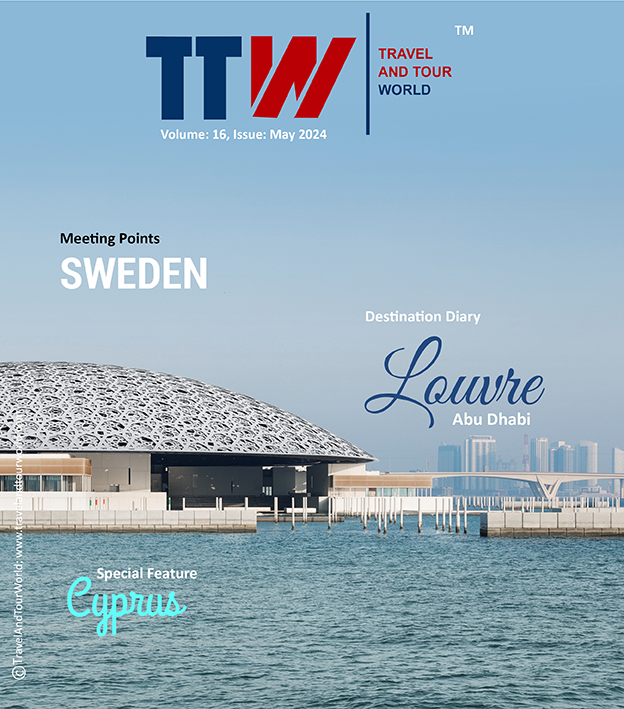
Select Your Language

I want to receive travel news and trade event update from Travel And Tour World. I have read Travel And Tour World's Privacy Notice .
REGIONAL NEWS

Ithraa Alkhair Reaffirms Superior Hajj Services at Seminar with Belgian and Dutc
Sunday, May 12, 2024

Buenos Aires Horrific Train Collision in Palermo Leaves Ninety Wounded
Saturday, May 11, 2024

Canadian Canoe Museum Unveils New Lakeside Campus

ASTA to Challenge Recent FAA Bill’s Neglect of Small Travel Agencies on Le
Middle east.

Saudi Tourism Authority and noon.com Collaborate to Attract Tourists at ATM in D

Horrific Bus Plunge in St Petersburg, Russia Claims Seven Lives

China Embraces 11 European Nations with Visa-Free Entry, Pioneering Cultural Exc
Upcoming shows.
May 09 Seoul International Tourism Industry Fair (SITIF) 2024 May 9 - May 12 May 14 IMEX FRANKFURT May 14 - May 16 May 14 AFRICA’S TRAVEL INDABA May 14 - May 15 May 14 GBTA APAC Conference 2024 May 14 - May 15
Privacy Overview

Saudi Arabia's tourism boom: Aiming for 150 million visitors by 2030
S audi Arabia, known for its penchant for luxury and significant investments, is on the path to becoming a coveted tourist destination fueled by nearly limitless financial reserves and an ambitious drive for success. The country is earnestly working towards achieving this vision.
The Saudi Ministry of Tourism revealed on Tuesday, February 27, that 2023 saw a remarkable influx of tourists, reaching 106.2 million. This marks a 56 percent increase from the numbers recorded in 2019 and a 12 percent growth compared to 2022. Of this impressive total, foreign guests alone accounted for 27.4 million visitors last year.
Yet, Saudi Arabia's aspirations do not end here. Five years ago, the National Tourism Strategy articulated the country's ambitious goal to attract 150 million tourists annually by 2030—an increasingly achievable target.
Saudi Arabia to host the world's largest urban park
Riyadh, the nation's capital, is on course to establish the world's largest urban park. King Salman Park, developed on a former military airport's site, aims to offer a verdant oasis amid the desert, featuring extensive green spaces, trees, and shrubs.
New attractions: An amusement park and ski resort underway
Saudi Arabia is making headway with an amusement park, "The Rig," constructed on an oil rig platform on the eastern coastline near Al Juraid Island and the Berri oil field. This development is roughly 3.2 million square feet and promises a unique blend of excitement and innovation.
The world's largest airport in the making
Plans are afoot to construct a new airport in Riyadh to replace the current one. The forthcoming King Salman Airport will boast six runways. By 2050, it is projected to manage up to 185 million passengers annually, making it the largest airport globally.
Another addition will be the Neom Airport, which aims to support the nascent Neom Airlines. The national carrier is looking to broaden its network of routes by 2025 considerably.
Major changes in Thailand aim to encourage tourist spending
Venice starts charging entry fee to control 'hit and run' tourism during peak periods
Hagia Sophia reinstates entry fees for tourists. $27 for a glimpse of divine wisdom

- Arab News JP
- Arab News FR
Search form

- Pakistan " data-color="d85229"> After shock defeat, Pakistan face Ireland in second T20I in Dublin today
- World " data-color="d85229"> Canada arrests fourth Indian national in killing of Sikh activist
- Pakistan " data-color="d85229"> Pakistan deputy PM to head to China on Monday for talks on trade, economic cooperation
- Pakistan " data-color="d85229"> Pakistan praises Saudi Arabia’s use of technology to enhance pilgrim experience with ‘flying taxis’
- Pakistan " data-color="d85229"> UN Security Council seeks inquiry into mass graves in Gaza
- World " data-color="d85229"> Thousands of pro-Palestinian protesters rally in Madrid
- Business & Economy " data-color="d85229"> Saudi Arabia woos investors with lucrative business environment
- Business & Economy " data-color="d85229"> The rise of the Saudi perfume market
- Business & Economy " data-color="d85229"> AlUla’s rise drives economic growth and job creation
- Pakistan " data-color="d85229"> IMF team to arrive in Pakistan in coming week for talks on ‘next phase of engagement’
You are here
Tourism boom for saudi arabia with 58% growth in arrivals in 2023, ranks 2nd globally.
https://arab.news/w9bc3
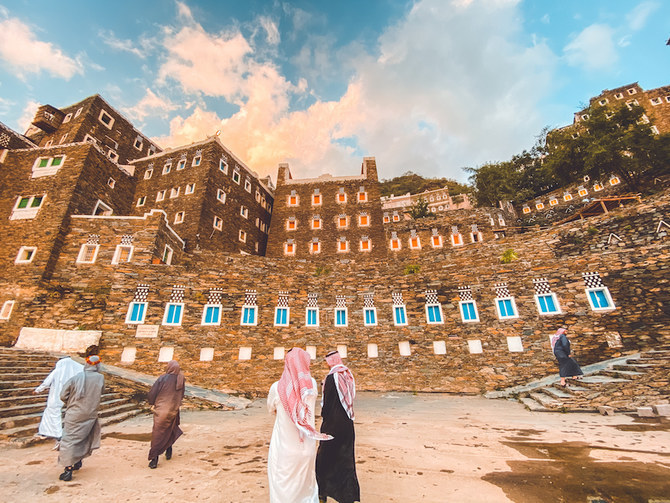
- Riyadh hosted World Tourism Day on Sept. 27-28, reflecting the Kingdom’s commitment to the global tourism sector
RIYADH: Saudi Arabia has been ranked second globally in terms of tourist arrivals during the first seven months of 2023, the Saudi Press Agency reported on Tuesday.
The Kingdom saw a 58 percent growth in tourist numbers up to the end of July, according to the Ministry of Tourism, compared to the same period in 2019.
The data was sourced last month from the UN World Tourism Organization and came from the UNWTO World Tourism Barometer.
Riyadh hosted World Tourism Day on Sept. 27-28, reflecting the Kingdom’s commitment to the global tourism sector.
Saudi Tourism Minister Ahmed Al-Khateeb said that the achievement “would not have been possible without the support of the Custodian of the Two Holy Mosques King Salman and the Crown Prince,” the SPA reported.
Al-Khateeb added that the ranking strengthened the country’s status as a global tourist destination and that the substantial rise in arrivals reflected the confidence travelers had in the variety and quality of tourism options available within the Kingdom.
Hide comments Please enable JavaScript to view the comments powered by Disqus.
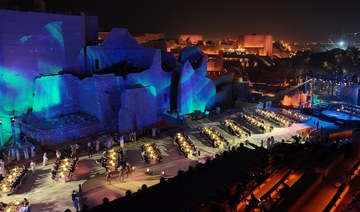
50 tourism ministers, 500 guests welcomed to Diriyah for World Tourism Day
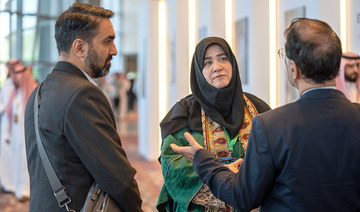
UN tourism chief lauds Saudi Arabia’s starring role in sector on world stage
Botulism outbreak traced to mayonnaise at riyadh restaurant.

- Saudi food authority discovers clostridium botulinum in Bon Tum brand product; ministry implements strict measures
RIYADH: The Ministry of Municipal, Rural Affairs and Housing announced on Saturday that a Saudi Food and Drug Authority laboratory test had found clostridium botulinum in a Bon Tum mayonnaise brand used by the Hamburgini food chain.
Since the bacterium was discovered in a Bon Tum factory, the ministry has collaborated with the SFDA and other authorities to enforce additional measures beyond those previously implemented.
These measures include suspending the distribution of the mayonnaise product and withdrawing it from markets and food facilities across all cities in the Kingdom. They also include halting operations at the factory in preparation for implementing statutory procedures.

Any remaining quantities of the product at the factory across all batches and expiration dates have also been withdrawn, and all factory clients, including restaurants and food establishments, have been notified to dispose of any quantities they own.
The ministry has also issued instructions to continue the monitoring, investigation, and inspection campaigns across all cities of the Kingdom by municipalities and relevant authorities, ensuring the safety of food products provided to consumers.
Authorities have emphasized the importance of obtaining information from official sources and not being swayed by rumors and misinformation.
HIGH LIGHTS
• The botulism outbreak was first brought to light on April 27 when Riyadh municipality received a report of food poisoning cases linked to the Hamburgini restaurant chain.
• New measures undertaken by authorities include suspending the distribution of the Bon Tum mayonnaise product and withdrawal from markets and food facilities in the Kingdom.
• Any remaining quantities of the product at the factory across all batches and expiration dates have also been withdrawn.
• Authorities have emphasized the importance of obtaining information from official sources and not being swayed by rumors and misinformation.
Dr. Nezar Bahabri, infectious diseases consultant at the International Medical Center in Jeddah and the director of the Saudi Society of Medical Microbiology and Infectious Diseases in Jeddah, told Arab News that contracting illness through clostridium botulinum is very rare as it thrives in non-oxygenated (anaerobic) environments and is typically found in improperly preserved foods.

The bacterium produces a toxin that attacks the body’s nervous system, resulting in muscle weakness, blurred vision, difficulty speaking and swallowing, and eventually paralysis. Typically, the likelihood of exposure to this bacterium is low with modern food safety practices in place.
Bahabri said: “When this bacterium is ingested, and the toxin is released, symptoms will manifest within a few hours up to around two days.”
Mohammed Al-Awamy, a gastroenterologist, told Arab News: “Symptoms start in the face and then descend to involve the limbs and trunk. Respiratory failure ensues due to involvement of the respiratory system leading to cardiopulmonary collapse.”
The best measure to be taken is eating fresh and cooked food as the heat of cooking will kill the bacteria, and the toxin will become ineffective. Dr. Nezar Bahabri, Infectious diseases consultant, International Medical Center
The symptoms of botulism, the illness caused by clostridium botulinum, are quite distinct and can be quickly recognized and treated with an antitoxin.
Bahabri explained: “If it was an injury, we will clean the wound and the infected tissue. If it is due to ingestion, we administer antitoxin, IV (intravenous) fluid, and painkillers as needed.”
Botulism is a life-threatening neurological disorder resulting in paralysis and death if not treated promptly.
Bahabri said that a patient must be admitted to hospital for observation, adding: “If the patient develops symptoms or weakness in the respiratory or lung muscles, we will transfer them to the ICU (intensive care unit) to put them in mechanical ventilation until the antitoxin works.”
Bahabri said that with proper treatment, the chance of a patient dying was less than 7 percent, adding: “The best measure to be taken is eating fresh and cooked food as the heat of cooking will kill the bacteria, and the toxin will become ineffective.”
The occurrence of clostridium botulinum infections is extremely uncommon due to the precautions taken in food preparation and handling. Therefore, it is important to stay informed about food safety guidelines and to be cautious when consuming canned or preserved foods.
The botulism outbreak was first brought to light on April 27 when Riyadh Municipality received a report of food poisoning cases linked to the Hamburgini restaurant chain.
The Ministry of Health said 75 people were affected in the outbreak, which included one death, and that no new cases had been recorded.
Dr. Mohammed Al-Abd Al-Aly, the Kingdom’s Health Ministry spokesperson, said on social media platform X: “The total number of recorded cases stands at 75, including 69 Saudi nationals and six non-Saudis.”
He also confirmed at the time that the only source of the contaminated food was from the local Hamburgini fast-food restaurant chain.
In response, health oversight teams promptly initiated an investigation and began monitoring the situation. By 10 p.m. on Thursday, all locations, branches, and the main catering factory of the restaurant chain in Riyadh were ordered to close.
Delivery services through the facility or via applications were suspended, and coordination efforts were initiated with key bodies, including the Ministry of Health, the Food and Drug Authority, and the Public Health Authority.
People reacted on social media platforms after the announcement of the lab results.
McDonald’s Saudi Arabia wrote on X: “We, at McDonald’s Saudi Arabia, assure everyone that we do not use, nor have we ever used, Bon Tum mayonnaise … No case of poisoning was detected in any of our restaurants, thank God, and none of our branches were closed during this entire period.
“We wish and pray for all those injured to recover quickly. May God protect our country and our honorable people from all harm.”
@MohammedLegandry wrote on X: “This mayonnaise is officially the cause of the poisoning cases that occurred. I think it is positive news for the sector as long as the problem is identified, and it limits the messages of weak-minded people, the writing and spreading of circulating rumors, frightening people, and causing panic.”
“We are reassured that government agencies are keen on the public health of individuals,” posted @Nnalshriii.
@Abusayel54 commented on X: “I hope that the factory will be defamed, closed, and fined.”
@iiuxr8 said: “Is the mayonnaise the main cause of poisoning, or poor storage? (by Hamburgini).”
Another user @Hamoooo11 wrote: “Food quality and safety is the role of the restaurant itself to ensure its products, even if they are sourced externally. Otherwise, what is the point of a specialist and quality controller in their facilities?”
Show comments Please enable JavaScript to view the comments powered by Disqus.
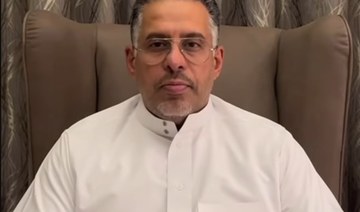
Saudi health officials investigate food poisoning outbreak at Riyadh restaurant chain
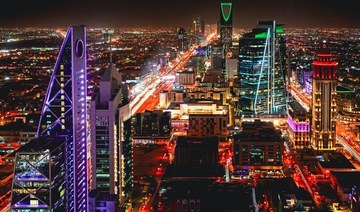
Riyadh Municipality confirms single company was responsible for recent food poisoning cases
Pearls of farasan offer a deep dive into the past.
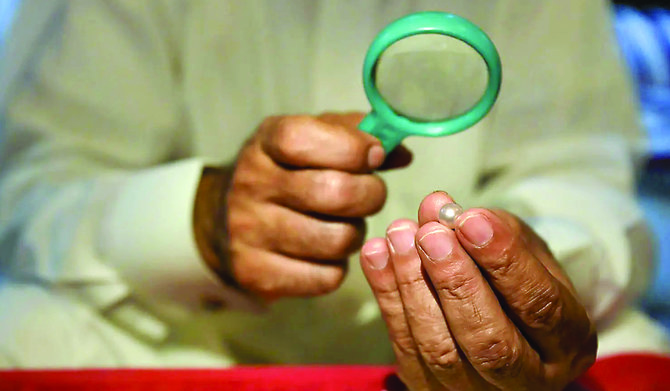
- The lucrative pearl trade in the past centuries contributed to the formation of a wealthy class in Farasan, whose trade led them to market pearls abroad
- Little was known that the search for pearls were associated with hardship, fatigue, and risk for fishermen who spent long months diving, away from home
RIYADH: Farasan Islands’ Hareed festival, which concluded recently, marked the start of annual pearl fishing trips, an ancient skill and a major source of the islanders’ prosperity.
Ships once carried 30 to 40 islanders in search of pearls, a lucrative source of income in previous centuries.

Sheikh of the Farasan Islands, Mohammed bin Hadi Al-Rajhi, described the stages of preparation for pearl fishing trips, which began with the shipowner inspecting and preparing his vessel, and providing sailors’ homes with supplies and foodstuffs that will suffice their families for the duration of their absence at sea.
He also prepared food for the trip, including red corn or whole wheat, and drinking water stored in clay vessels.
• A pearl merchant, Suleiman Balaous, classified pearls according to size and weight.
• One variety, ‘Al-Dana,’ meaning round, is distinguished by its large weight, bright luster, and absence of flaws.
• Smaller varieties such as ‘Al-Mazouri,’ ‘Al-Ansar,’ and ‘Al- Badla,’ have irregular shapes.
Al-Rajhi, an expert on pearl fishing, added: “The beginning of the month of May witnessed the start of these trips that last for three or four months, which are the summer months when it is easy to obtain pearls, so the fishermen set sail to Al-Maaden (mineral) areas, which abound with oysters containing pearls.”

Once the deep dives begin, diving activities were divided over five days, with the first four days’ harvest going to the divers and the fifth day’s harvest going to the shipowner, he said.
Divers used a weight tied to one foot to help them descend to depths of 12 meters and more to extract pearls. The diver communicated with an assistant on the deck of the ship using a rope, which was also used to pull him back to the surface.
In return for this assistance, the diver allocated a portion of his harvest — known as “dangeel,” a net in which the oysters were collected — to the assistant as payment.

Diving would start following the fajr prayer, with work continuing until noon. Afterward, the crew would rest before beginning the “fulq” process, which involved opening the oysters, allowing each diver to inspect their daily harvest.
Referring to pearl sorting tools owned by pearl merchants at that time, Al-Rajhi said that merchants had copper sieves of various sizes, to sort large pearls from small varieties.
A pearl merchant, Suleiman Balaous, classified pearls according to size and weight. One variety, “Al-Dana,” meaning round, is distinguished by its large weight, bright luster, and absence of flaws.
Smaller varieties such as “Al-Mazouri,” “Al-Ansar,” and “Al-Badla,” have irregular shapes, while pearls harvested from the Farasan Islands are distinct from those in most pearl diving areas in terms of color and clarity, Al-Rajhi said.
The long months of pearl diving were associated with hardship, fatigue, and risk, and fishermen invented the folk songs of Al-Dana for entertainment. It has emerged as one of the oldest folk arts in Farasan, expressing the sailors’ longing during long absences searching for pearls.
The lucrative pearl trade in former centuries contributed to the formation of a wealthy class whose trade led them to market pearls in Gulf Arab countries, Europe, and particularly in India, which was a major pearl market.
Traders saw Eastern arts and inscriptions on buildings, which influenced their cultural and architectural ideas. They introduced these motifs to the Farasan Islands, where they were reflected in several wealthy individuals’ homes, particularly the two houses of Al-Rifai, one of which belongs to Ahmed Al-Munawar Al-Rifai and was completed in 1922, and the other belongs to Hussein bin Yahya Al-Rifai.
This also influenced the construction of the Najdi Mosque, which was completed in 1928 by Sheikh Ibrahim Al-Tamimi, popularly known as “Al-Najdi,” who worked in the pearl trade and was impressed by Eastern civilization due to his numerous travels to India.
Pearls played a major role in Farasan’s commercial and economic activity until the trade faded with the rise of agricultural and industrial pearls, becoming part of the islands’ heritage and ancient culture.
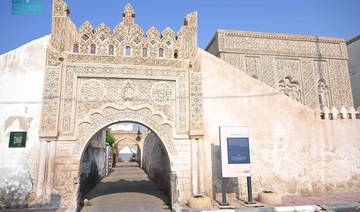
Hareed Festival: A window into the heart of the Farasan Islands
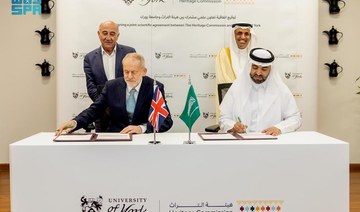
Saudi, British teams to explore prehistoric sites in Farasan Islands and Jazan
General directorate of public security warns citizens about fake hajj advertisements on social media.
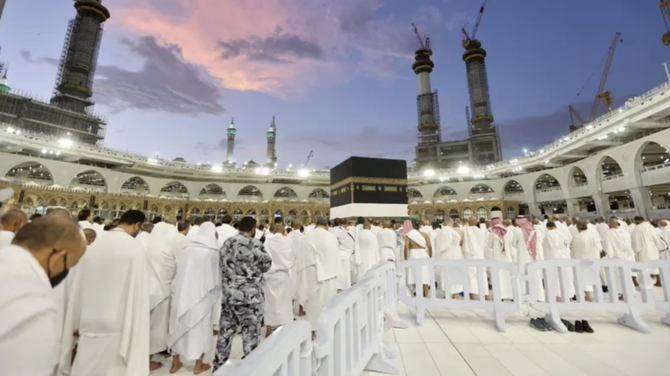
- Severe penalties to be imposed for engaging in such activities
RIYADH: Citizens in Saudi Arabia were warned on Saturday by the General Directorate of Public Security to disregard fraudulent advertisements on social media.
The authorities highlighted adverts that falsely claim to facilitate various aspects of Hajj, including performing Hajj on behalf of others, securing and distributing Adahi (sacrifices), selling Hajj bracelets, and providing transportation, the Saudi Press Agency reported.
The directorate emphasized that severe penalties would be imposed on individuals apprehended for engaging in such activities.
It also said that the Project for Utilization of Hady and Adahi is the only official platform authorized to sell and promote Adahi bonds.
Public Security also urged citizens and residents to strictly adhere to Hajj regulations and guidelines.
It said any violations should be promptly reported by calling 911 in Makkah, Riyadh, and the Eastern Region, or 999 in the rest of the regions of the Kingdom.
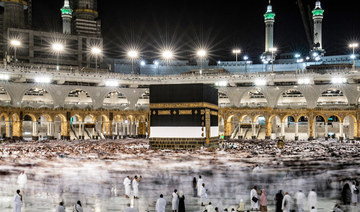
Saudi Public Security to issue Makkah entry permit instructions on Saturday ahead of Hajj season
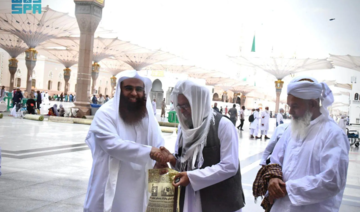
Saudi authorities greet first group of Hajj pilgrims arriving in Madinah
Saudi arabia’s kfsh&rc chief hails hospital’s transformation in speech at harvard.
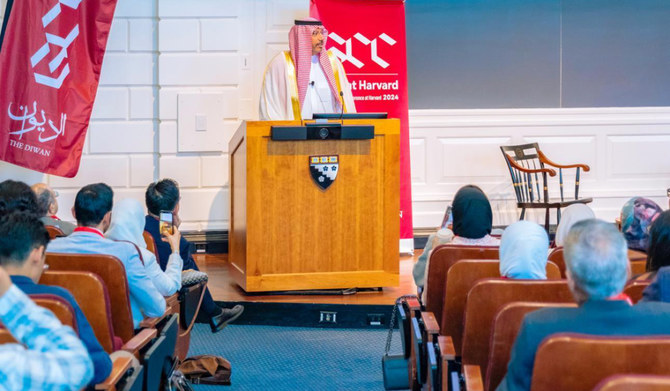
- The facility has recorded significant breakthroughs in the research of T-cell therapy, robotic surgery, organ transplantation and personalized medicine
RIYADH: King Faisal Specialist Hospital and Research Center is providing leading healthcare in the region after undergoing a decades-long transformation plan, its CEO has said.
Dr. Majid Ibrahim Al-Fayyadh was speaking at Harvard University’s Gulf Creatives Conference in the US.
He highlighted the role of the hospital in providing cutting-edge care in Riyadh, reducing the need for patients in the region to make long journeys for treatment.

The hospital uses advanced methods to treat heart disease, cancer and genetic diseases for patients in the Kingdom and wider Middle East, the Saudi Press Agency reported on Saturday.
The conference at Harvard, organized by The Diwan, a student-run organization at the university in Cambridge, Massachusetts, is being held from May 10-12.
At the conference, the KFSH&RC chief also took part in a panel discussion on the future of the health sector and the hospital’s transformation in patient care. Al-Fayyadh highlighted the impact of hospital innovation in the Kingdom in supporting the objectives of the Health Sector Transformation Program and Saudi Arabia’s Vision 2030.
Al-Fayyadh highlighted the transformation of KFSH&RC, which aligns with its strategic vision to lead healthcare innovation globally through excellence and investment in advanced technology.
“The Saudi leadership has a clear vision for KFSH&RC, which was crowned by royal order to transform it into an independent institution of a private, nonprofit nature,” he said.
The transformation includes enhancing existing services and exploring new medical trends to improve health and well-being, he added.
Al-Fayyadh highlighted the hospital’s efforts to pioneer efficiency in healthcare spending and adhere to evidence-based practices for optimal patient outcomes. By adopting initiatives that broaden access to quality treatment worldwide, the hospital continues to play a leading role in healthcare innovation, he said.
The facility has recorded significant breakthroughs in the research of T-cell therapy, robotic surgery, organ transplantation and personalized medicine. It seeks to improve its international competitiveness by investing in advanced medical facilities, developing diagnostic and therapeutic techniques, and enhancing human resources services, Al-Fayyadh added.
At the conference, the KFSH&RC chief also took part in a panel discussion on the future of the health sector and the hospital’s transformation in patient care.
Al-Fayyadh highlighted the impact of hospital innovation in the Kingdom in supporting the objectives of the Health Sector Transformation Program and Saudi Arabia’s Vision 2030.
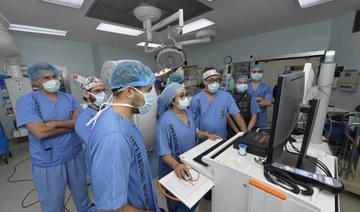
King Faisal hospital performs robotic epilepsy surgery
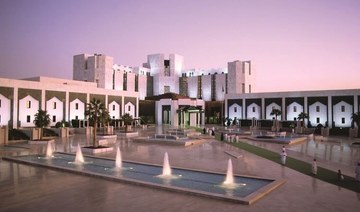
Visionary AI eye-screening to boost Saudi healthcare
107 saudi students graduate from hospitality management scholarship program.
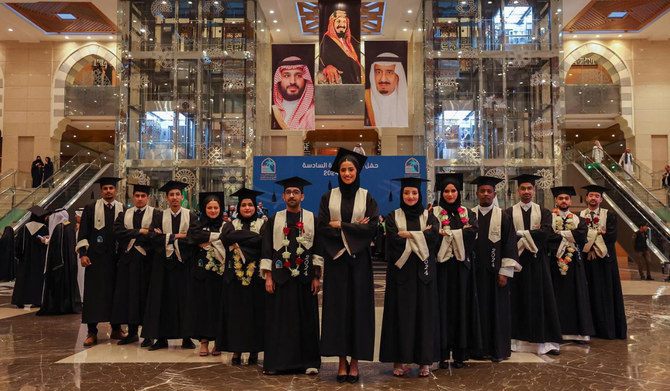
- Red Sea Global and University of Prince Mugrin celebrate first batch of graduates
RIYADH: Red Sea Global, the developer of “regenerative tourism destinations” The Red Sea and AMAALA, celebrated the graduation of the first batch of international hospitality management students from its scholarship program in partnership with the University of Prince Mugrin in Madinah, the Saudi Press Agency reported on Saturday.
The graduation ceremony took place at the King Salman International Convention Center under the patronage of Prince Mugrin bin Abdulaziz, honorary president of the university; Prince Salman bin Sultan, governor of Madinah; and Prince Faisal bin Muqrin bin Abdulaziz, chairman of the board of directors of Al-Bayan Charitable Society for Education, with students and their families in attendance.
A total of 107 students earned bachelor’s degrees in international hospitality management, accredited by Swiss EHL Hospitality Business School.
A total of 107 students earned bachelor’s degrees in international hospitality management, accredited by Swiss EHL Hospitality Business School. All of them were on full scholarships funded by RSG, according to the SPA report.
Ahmad Darwish, group chief administrative officer at RSG, said: “We are delighted to celebrate the graduation of the first group of students from the Red Sea Global scholarship program. This group consists of 80 male and 27 female students who have specialized in international hospitality management, with accreditation from the prestigious Swiss EHL Business Hospitality School. They will all contribute toward extending a warm welcome to the world in Saudi Arabia.”
Darwish added: “The University of Prince Mugrin is making tremendous efforts to provide world-class educational opportunities in various disciplines through innovative academic and research programs in line with the highest international standards. It is effectively contributing to the economic development of the Kingdom by preparing its graduates to face the dynamic changes in various fields of work.”
Bander bin Mohammed Hajjar, president of the University of Prince Mugrin, said: “The university is proud of its distinguished partnership with Red Sea Global, which contributes to achieving Saudi Vision 2030. Its careful planning focused on two paths: the physical construction of its destinations and preparing the people to manage and operate those destinations.
“Today, our partnership is reaping the results of that planning with the graduation of 107 students, who will now go directly to working with RSG and its partners after obtaining knowledge, skills and professional certificates in the field of international hospitality and tourism management. Their training included 1,200 hours of work experience in major hotels in the Middle East. The university looks forward to taking its partnership with RSG to broader horizons in the future in order to achieve our common goals.”
Since its inception, RSG has focused on “cultivating experts and leaders in international hospitality through a curriculum aligned with global standards in hospitality and sustainable tourism, integrating hospitality knowledge, management principles, and practical business projects,” the SPA said.
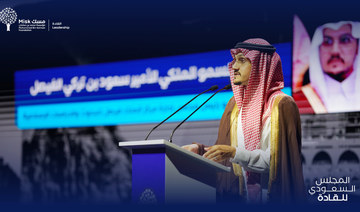
Saudi Leadership Society Council honors new graduates
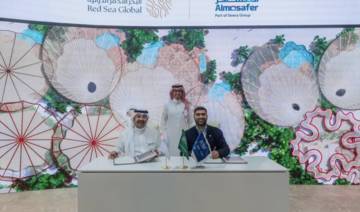
Red Sea Global seals deals with Almosafer and Saudia to elevate tourism sector
Latest updates, after shock defeat, pakistan face ireland in second t20i in dublin today.

Canada arrests fourth Indian national in killing of Sikh activist

Pakistan deputy PM to head to China on Monday for talks on trade, economic cooperation

Pakistan praises Saudi Arabia’s use of technology to enhance pilgrim experience with ‘flying taxis’

UN Security Council seeks inquiry into mass graves in Gaza

Recommended
Tiktok gang bust lays bare continued criminal abuse of children in lebanon.

How building greener homes in Saudi Arabia could benefit the environment and well-being of homeowners

How a Saudi start-up hopes to beat sickle cell disease with an AI-trained gene-editing biorobot

Print Edition
- Home
- Pakistan
- Press Review
- Saudi Arabia
- Middle East
- World
- Business
- Opinion
- Lifestyle
- Sport
- Jobs
- Editorial Management
- corporate pr
- about arabnews
- Privacy & Termes of Service
Travel Industry News by ITB : Daily Travel & Tourism News

Primary Navigation
— Registration Number: SIRET 413 604 471 — Professional Bodies: SYNTHEC — Company’s Director: Jean-françois PIERI CLEVERDIS — RCS Number: 413604471 SALON-DE-PROVENCE — Legal Form: CLEVERDIS SAS — VAT Number: TVA FR95413604471
SAUDI TOURISM BOOM
Short leisure breaks are set to drive a 38% increase in visitors to ksa by 2024, says new atm research..
Visitors to Saudi Arabia are predicted to increase 38% from 15.5 million in 2019 to 21.3 million by 2024, according to new research by Colliers International , commissioned by Arabian Travel Market (2020) , which takes place at Dubai World Trade Centre from 19—22 April 2020.
This increased demand will be driven by an increasing number of GCC residents wishing to visit the kingdom on short city or mini breaks. It will also be bolstered by business travellers extending work trips to explore the Kingdom’s expanding tourism offerings or attend one of the many sporting or cultural events.
Underpinning this trend, the data from Colliers revealed that over 21.3 million visitors were estimated to visit the country by 2024.
Danielle Curtis , Exhibition Director ME, Arabian Travel Market, said: “As Saudi Arabia continues to reduce its reliance on oil, increasing tourism arrivals is becoming instrumental in the country’s economic diversification, and at ATM, we are witnessing this growth firsthand, with the total number of exhibitors from the Kingdom increasing 45% year-on-year between 2018 and 2019.
“With an ambition to increase inbound tourism to 100 million by 2030, Saudi Arabia no longer wants to be viewed as solely a religious destination for the world’s Muslim community, or a corporate destination as one of the richest countries in the world. It has an incredible landscape, with diverse regions and an array of tourism offerings for leisure travellers.”
In line with growing tourism numbers, the global hotel industry has gained a renewed interest in Saudi Arabia with a number of international and regional brands looking to expand their presence across the Kingdom.
According to the latest data from STR , 79,864 hotel rooms are expected to be added to the Kingdom’s existing inventory by 2025, with the majority of rooms (34,270) in Makkah, followed by Jeddah and Riyadh with 14,525 and 11,632 new rooms, respectively.
Hotels in Riyadh witnessed a strong year in 2019, with RevPAR growing 5.2% following a 9.2% increase in occupancy and -3.6% decline in ADR. In Q4, Riyadh’s RevPAR reached 529.33 SAR – the highest it has been since 2014.
“While, this new supply may place additional competitive pressure on hotels’ performance across the country, the projected growth in visitor numbers over the next four years is expected to continue to boost occupancy levels throughout 2020 and well beyond,” said Curtis.
Following the introduction of the new tourist visa, which allows visitors from 49 countries to apply for an e-visa or receive a visa on arrival – the Kingdom has developed a two-phase tourism strategy in line with Vision 2030.
Phase one – 2019-2022 – will focus on attracting first-time visitors to discover Saudi Arabia, in particular, its pristine beaches, deserts, mountains and heritage sites such as Dir’iyah as well as its packed calendar of sporting and cultural events. While, phase two – 2022-onwards – will focus on the full development of giga projects such as NEOM and the Red Sea Project.
Turning to outbound tourism, Saudi Arabia’s outbound tourism market is expected to reach over US$ 43 billion by 2025, according to the latest data from Renub Research. While family holidays currently dominate the market, a rising generation Z population, who are heavily influenced by the image of a destination – whether it be gastronomy, adventure, culture or overall unique experiences, are expected to change this trend.
Looking ahead to ATM 2020, Saudi exhibitors who will highlight what the Kingdom has to offer and the exciting developments in the pipeline, include Saudi Commission for Tourism and National Heritage, SAUDIA and flynas, among others, with NEOM making its debut. The Saudi pavilion will occupy almost 2,300sqm of stand space this year, an increase of 20% compared to last year.
Curtis added: “As GCC travel and tourism companies and destinations look to attract a larger share of the KSA market , ATM 2020 will introduce the Saudi Arabia Tourism Summit as part of the show’s new forum & networking series. The session will outline what destinations are doing to attract visitors from this key market while also providing an informal networking event for buyers from Saudi Arabia and exhibitors.”
ATM, considered by industry professionals as a barometer for the Middle East and North Africa tourism sector, welcomed almost 40,000 people to its 2019 event with representation from 150 countries. With over 100 exhibitors making their debut, ATM 2019 showcased the largest ever exhibition from Asia.
Adopting Events for Tourism Growth as the official show theme, ATM 2020 will build on the success of this year’s edition with a host of seminar sessions discussing the impact events have on tourism growth in the region while inspiring the travel and hospitality industry about the next generation of events.
You Might Also Like:
Dubai department of economy and tourism launches ‘dubai sustainable tourism stamp’ for hotels with the highest adherence to sustainability standards, seaworld abu dhabi on yas island is the emirate’s newest attraction since may 2023, wego partners with spain tourism to provide customized experiences for mena travellers, industry news.
Drag to scroll
- +33 (0)4 42 77 46 00
- [email protected]
Legal Notices
- Cookie Policy (EU)
- Data Protection
Cookies help us to improve your experience on the website. You agree to our use of cookies by accessing the website. Detailed information about the use of cookies on this website can be obtained by clicking on Terms of use .
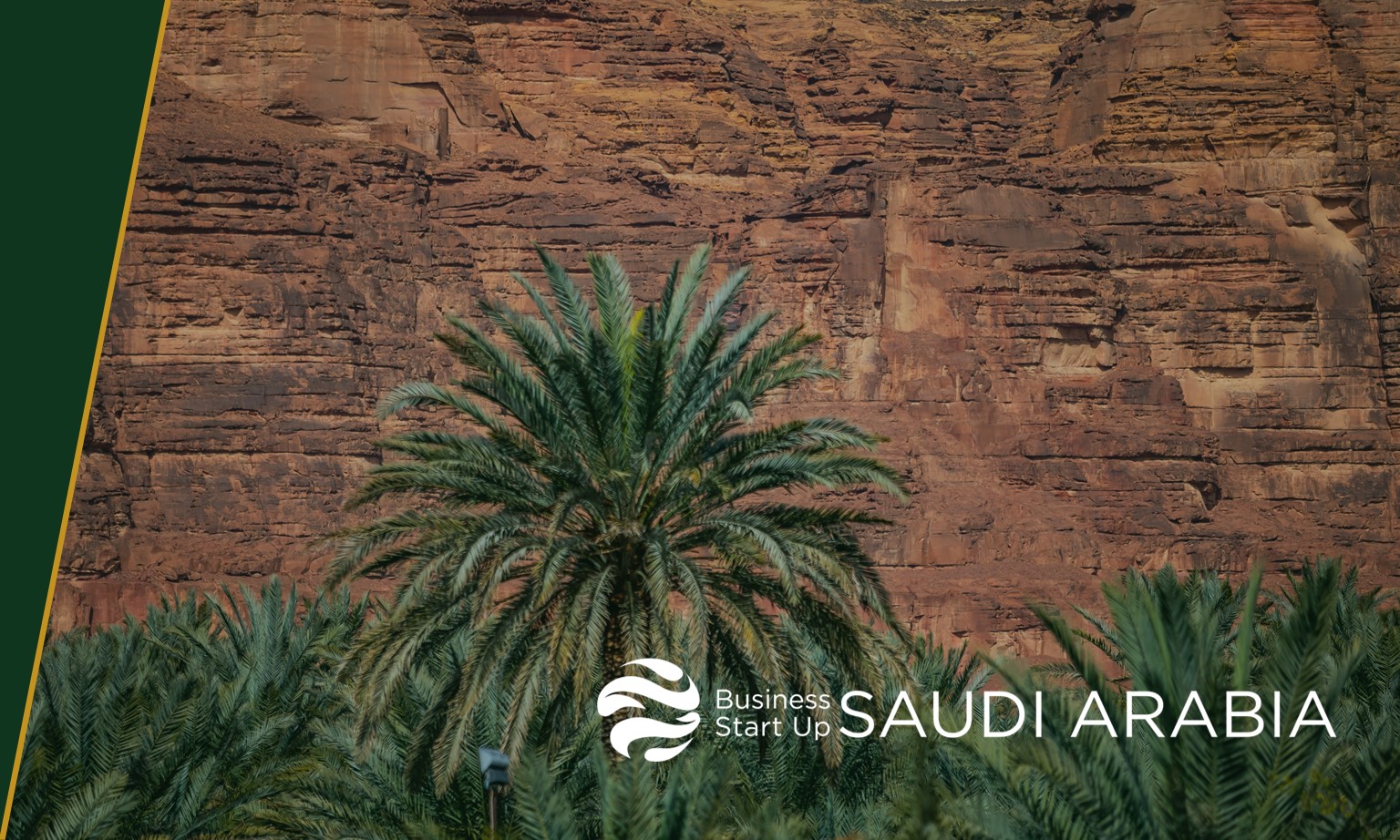
Saudi tourism revenues reach SAR 37 billion amid travel boom
Saudi Arabia recorded tourist revenue of SAR 37 billion (almost USD 10 billion) as the sector witnessed a massive surplus due to an unprecedented travel boom in the Kingdom.
According to figures released by the Ministry of Tourism , Saudi Arabia welcomed 7.8 million visitors in the first quarter of this year. This figure was the highest globally recorded quarterly performance, achieving growth of 64% compared to the same period in 2019.
Moreover, financial data released by the Saudi Central Bank (SAMA) revealed the surplus was achieved due to significant growth of incoming tourism revenues of 225% year-on-year to reach SAR 37 billion (USD 9.9 billion). It also announced that payments amounted to SAR 22.8 billion (USD 6.08 billion), compared to a deficit of SAR 1.6 billion (USD 427 million) in the first quarter of 2022.
For this reason, this success is a culmination of the ministry’s efforts to boost the tourism sector in line with the objectives of the National Tourism Development Strategy. Consequently it has demonstrated an important contribution to the growth of the national economy and its diversification strategies.
Further data issued by SAMA confirmed the high contribution of the sector to the Current Account Balance. Most importantly, these improvements were reached due to continuous cooperation with all government agencies, applying best practices in tourism development and upgrading tourism services and products.
As a result and demonstrating the improvement , The Kingdom advanced 16 places in the international tourism revenue index, reaching 11th place in 2022 compared to 27th in 2019.
Business Start Up Saudi Arabia offers a network of experts and specialists within the lifecycle of a business. We can offer expertise in Market Research and Assessment Saudi, Saudi Business Case, Saudi Business Model Development, Feasibility Study and Business Plan Saudi , Organizational and Operational Structuring Saudi, Saudi Sponsorship and Partnership, Company Formation Saudi among others.
Please click on the link to learn more about opportunities and possibilities in Saudi Arabia as well as the initiatives of Business Start Up Saudi Arabia.
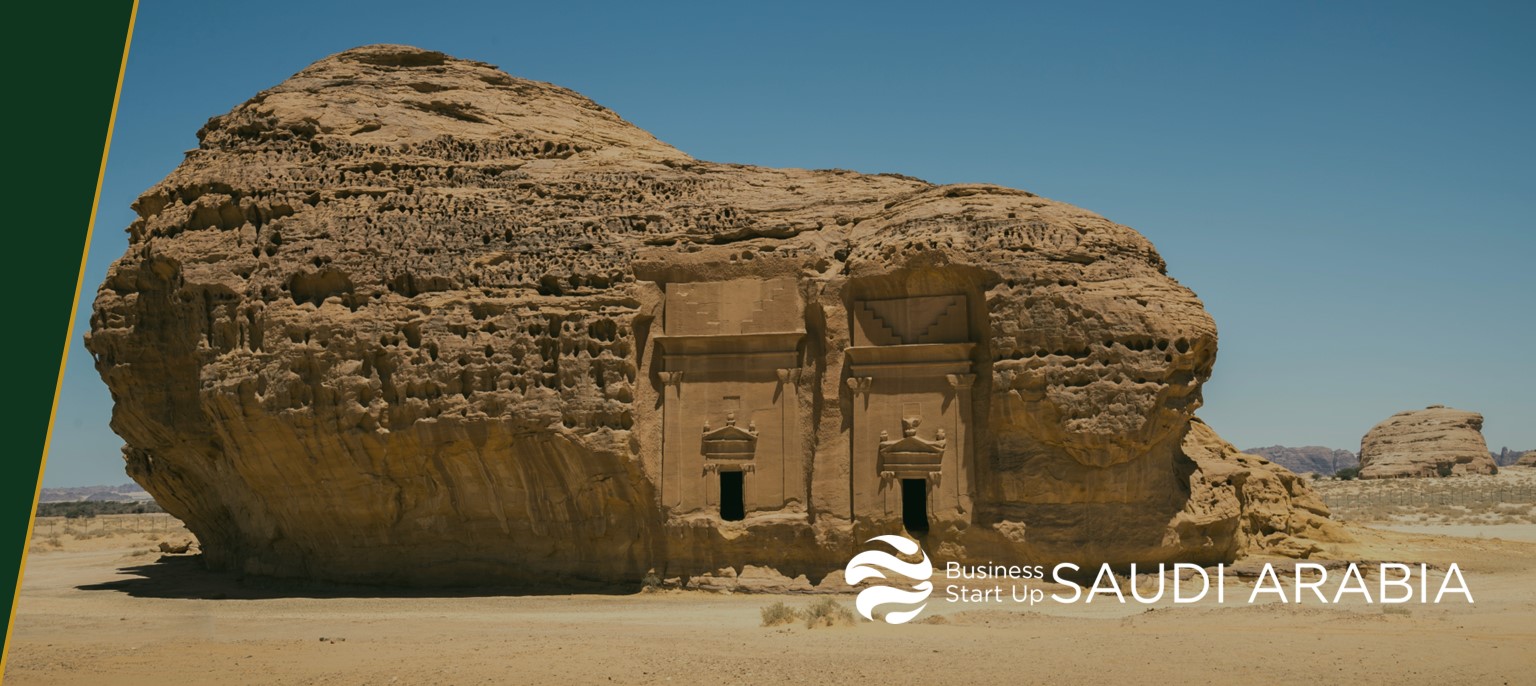
Saudi Arabia's non-oil activity increasing in line with Vision 30
Saudi Arabia's non-oil business activity grew at a steady rate in April according to a recently published survey with domestic demand driving output.
The seasonally adjusted Riyad Bank ...
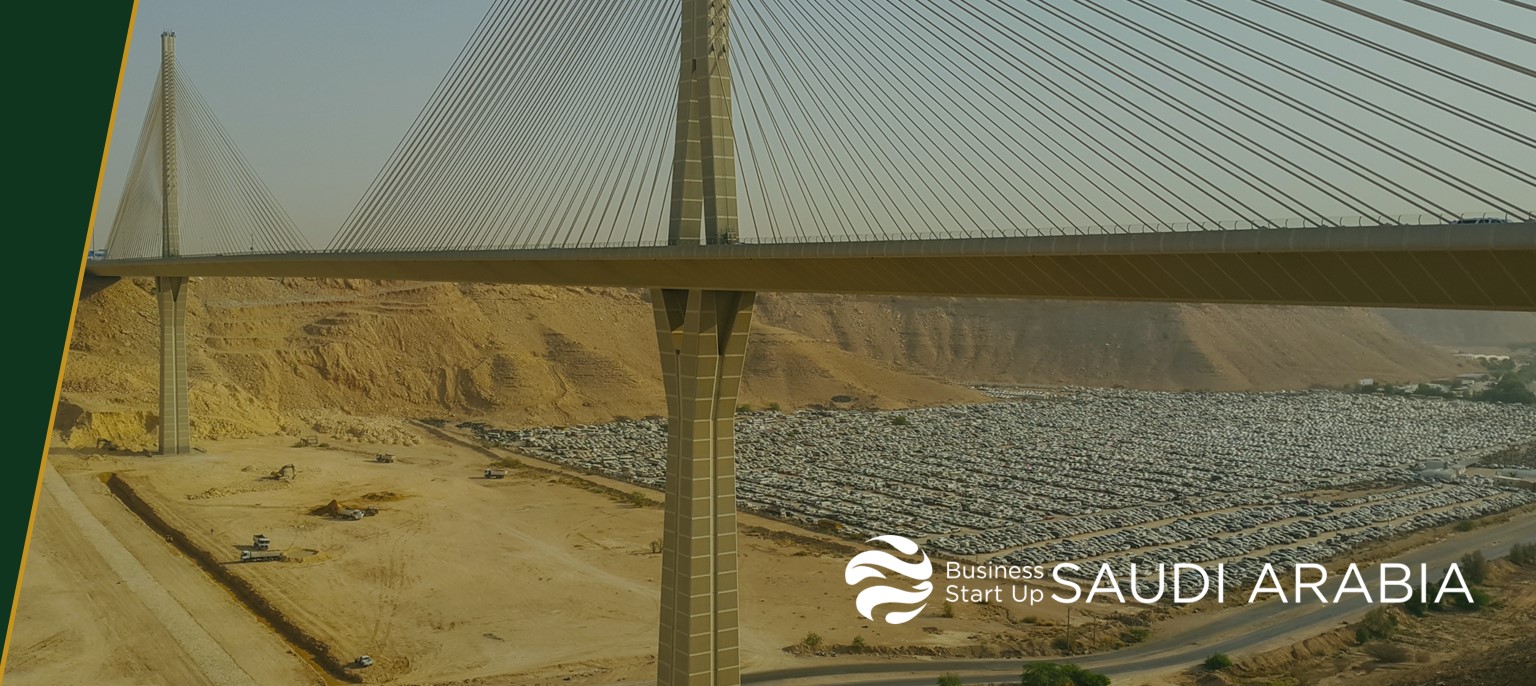
Saudi Arabia attracting GCC companies to lucrative opportunities
Saudi Arabia is attracting an influx of companies from across the Gulf Cooperation Council (GCC) due to burgeoning prospects and transformative development sweeping through the Kingdom.
Moreover, the...

Saudi sovereign wealth fund holds SAR 3.5 trillion in assets
Saudi Arabia’s Public Investment Fund (PIF) has enjoyed a 55 percent increase in assets under management and is now valued at SAR 3.49 trillion (USD 925 billion).
According to figures from the US...

Saudi Arabia waives customs duties to boost industrial sector
Saudi`s Ministry of Industry and Mineral Resources has announced that customs duties on selected manufacturing products will be waived from April 1.
The decision aims to help businesses with valid import...
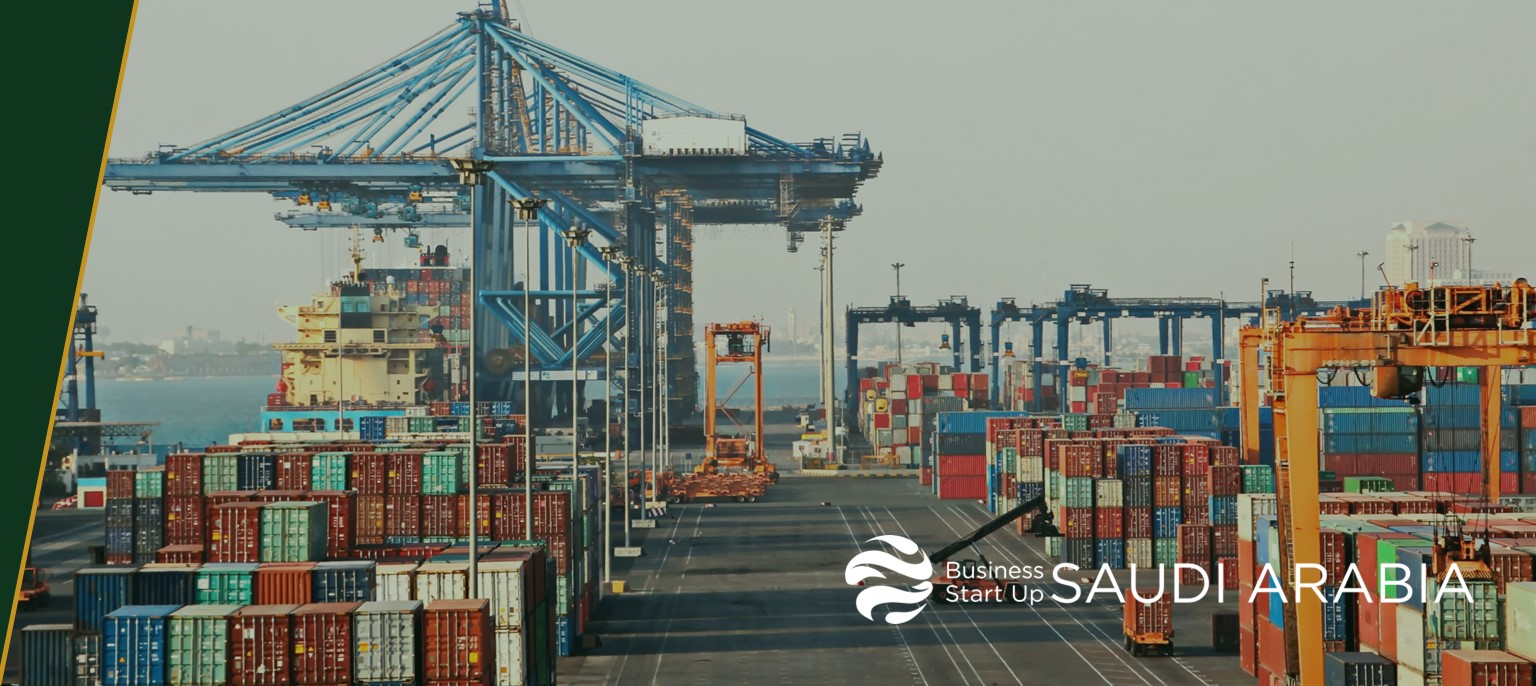
Saudi CEO`s forecast business optimism and economic growth
Saudi Arabian Chief Executive Officers have shown unprecedented optimism for the economic growth prospects of the Kingdom over the next year.
According to a study by Price Waterhouse Coopers (PWC) ...
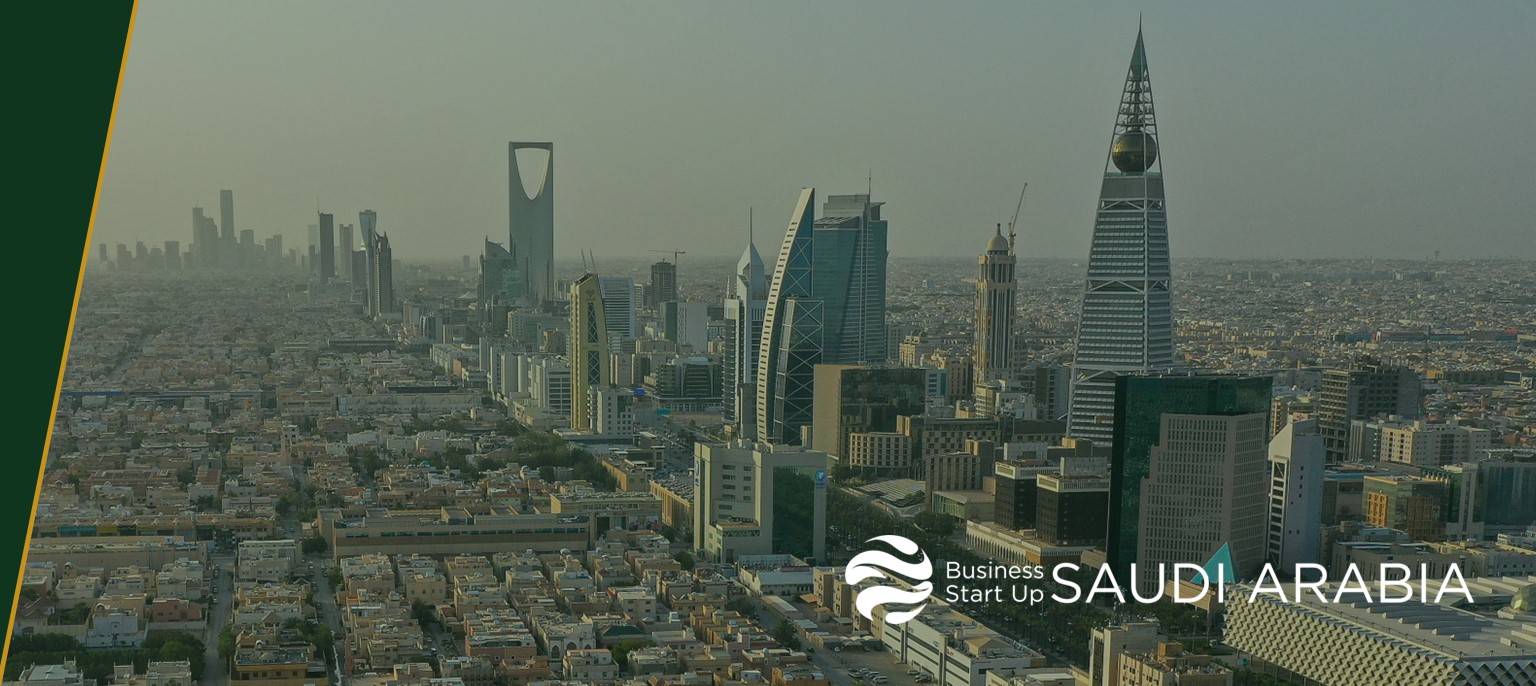
Saudi Arabia to add 250,000 hotel rooms, revises tourist targets
Saudi Arabia plans to add 250,000 hotel rooms by 2030 according to the Kingdom’s Ministry of Tourism, with 75,000 to be contracted to the private sector. Meanwhile, approximately 12 resorts on the Red...
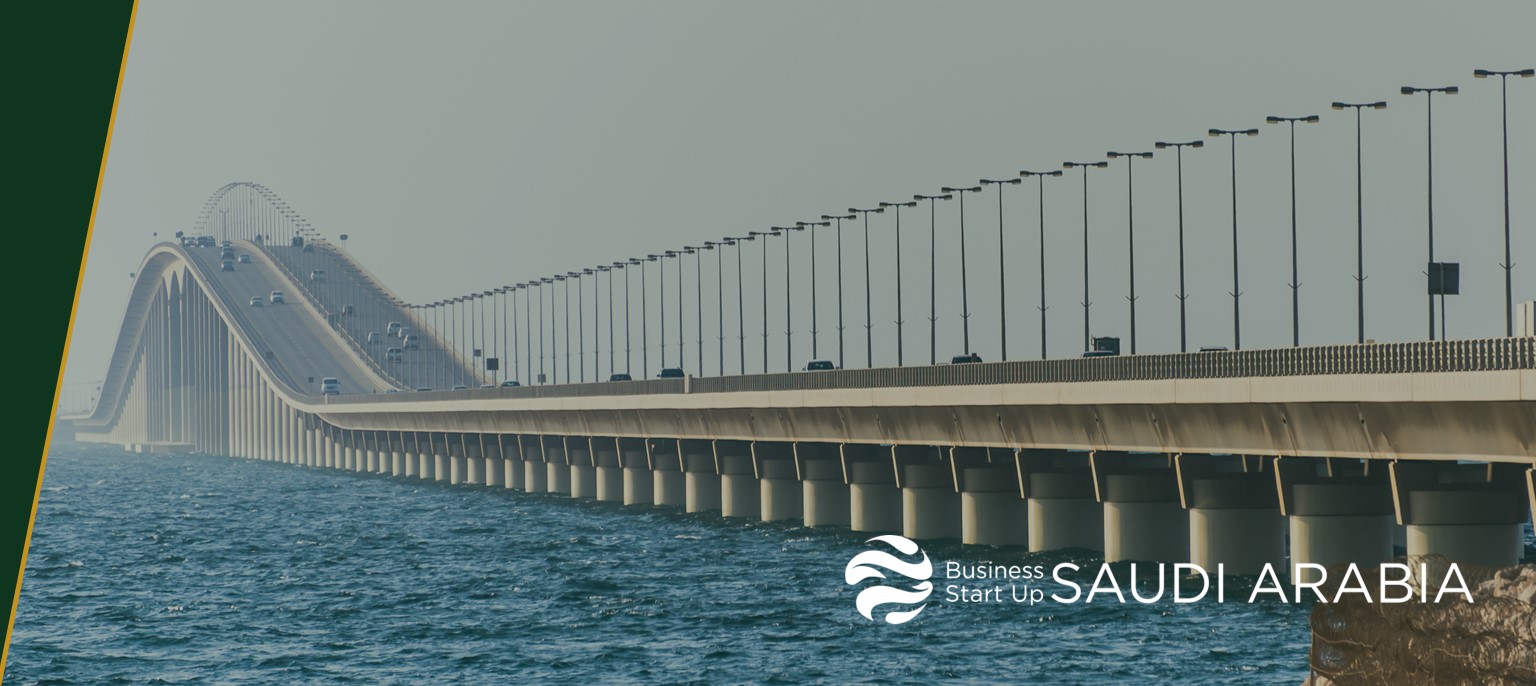
Saudi Arabia launches National Biotechnology Strategy
Saudi Arabia recently launched its National Biotechnology Strategy with the aim of cementing the Kingdoms position as the MENA leader in this vital sector.
The country will establish a state of the...
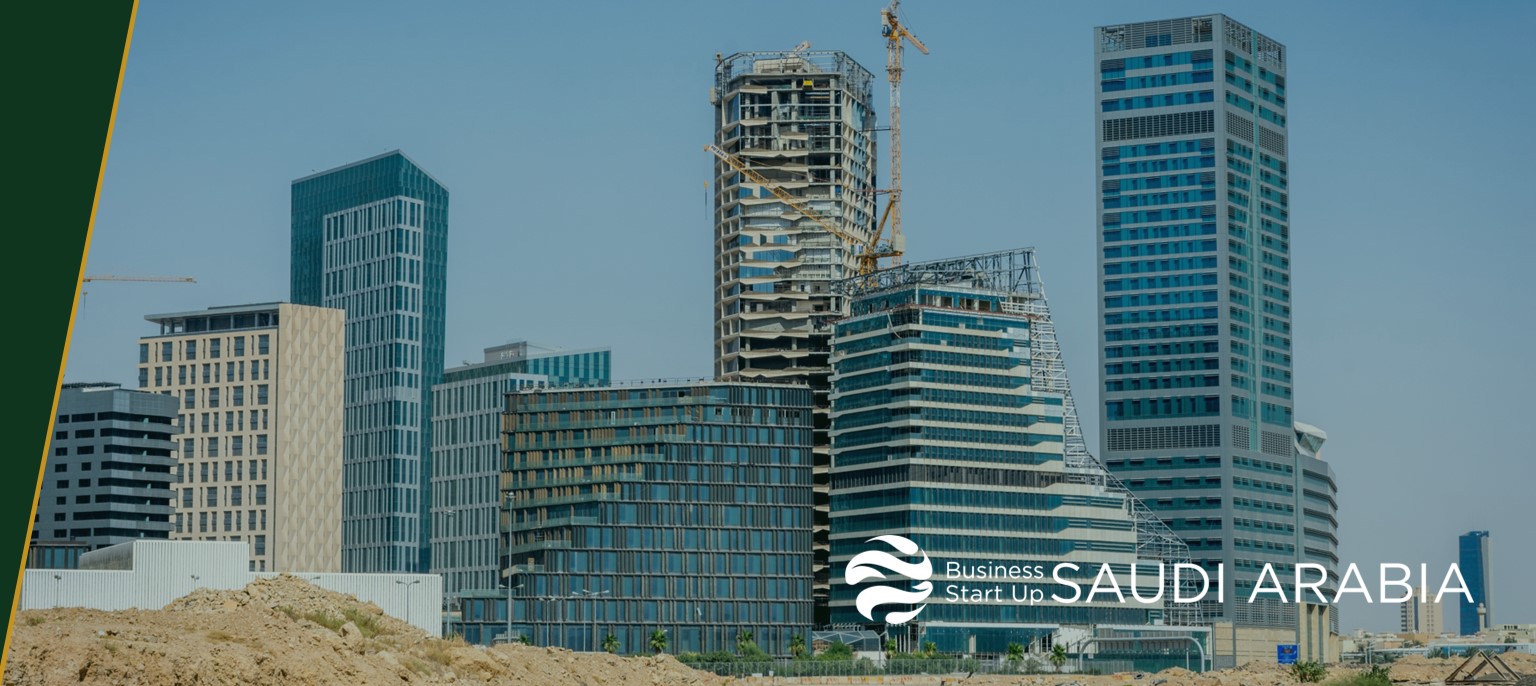
Saudi administrative court aims to boost investor confidence
Saudi Arabia's Ministry of Justice recently announced the Kingdoms first administrative enforcement court with jurisdiction over government entities and officials in a bid to boost investor confidence.
- [email protected]
- +44 20 7193 3255
- Business Start Up Saudi Arabia in association with Soutien Limited, Level 1, Devonshire House, One Mayfair Place, Mayfair, W1J 8AJ, United Kingdom

Keep in touch with us
Information on the most recent developments in the (business) ecosytem in the Kingdom of Saudi Arabia
- Preparation
- Education Institutions
- Government & Semi-Governmental Entities
- Banks & Financial Institutions
- Business Councils
- Co-Working Spaces
- Incubators & Accelerators
- Financiers & Investors
- Experts & Specialists
Explore our site
- Saudi Arabia
- Initiatives
Recent posts
Please click here to view our Terms of Use - Copyright © 2017 - 2021
- Middle East
- Eastern Europe
- Southeast Asia
- Central Asia
- International Law
- New Social Compact
- Green Planet
- Urban Development
- African Renaissance
- Video & Podcasts
- Science & Technology
- Intelligence
- Energy News
- Environment
- Health & Wellness
- Arts & Culture
- Travel & Leisure
- Hotels & Resorts
- Publications
- Advisory Board
- Write for Us

Saudi Arabia, a land traditionally synonymous with oil and Hajj pilgrimages, is making headlines with its burgeoning tourism sector. Over a three-month period, the kingdom witnessed a staggering inflow of 7.8 million people, generating a revenue of $9.86 billion in the first quarter of this year. This unprecedented growth has not only stimulated the Saudi economy but has also thrown a spotlight on the country’s untapped potential in sectors beyond oil.
Saudi Arabia has long been a destination for religious tourism, particularly for the Muslim pilgrimages of Hajj and Umrah. With the sacred cities of Mecca and Medina within its borders, the Kingdom has drawn millions of devout Muslims from around the world. This influx has inevitably contributed to the revenue stream, especially in sectors like hospitality, food, and travel.
Saudi Arabia’s Vision 2030, an ambitious blueprint for diversifying its economy, aims to reduce dependency on oil revenues and invest heavily in various sectors, including tourism. Spearheaded by Crown Prince Mohammed bin Salman, Vision 2030 encompasses transformative projects like the Red Sea Resort and NEOM, a planned $500 billion megacity. These initiatives intend to open Saudi Arabia to international tourists, attracting a demographic that goes beyond religious pilgrims.
Saudi Arabia has gradually eased its travel restrictions and visa policies to make it more tourist friendly. The introduction of the e-visa system, in particular, has made it easier for travelers to visit the Kingdom.
Economic Ramifications
The recent revenue of $9.86 billion from tourism serves as an immediate economic shot in the arm for Saudi Arabia. The numbers are impressive, especially when compared to other nations with robust tourism sectors. The surge in tourism directly translates into increased Gross Domestic Product (GDP) and employment opportunities. The tourism sector has started to become a pivotal component of the Saudi economy, potentially contributing to a percentage rise in the annual GDP. The massive inflow of tourists is also expected to generate job opportunities, especially in hospitality, retail, and transport.
Saudi Arabia has recently been grappling with a fragile economic situation, exemplified by a current account deficit. The influx of tourism revenue significantly ameliorates this concern, facilitating a healthier balance of payments and boosting financial reserves. The robust earnings from tourism herald a new phase of financial diversification for Saudi Arabia. As the country reduces its dependency on oil revenues, a balanced economic portfolio incorporating tourism revenue minimizes vulnerability to global market fluctuations in the oil sector.
The surge in tourism is also a strong magnet for foreign investment. Investors are likely to see the economic uptick as a signal to invest in Saudi tourism and related sectors. Moreover, it opens doors for international collaborations and partnerships. Whether it’s in marketing strategies to promote tourism or technology transfer for sustainable practices, global partnerships are expected to enrich Saudi Arabia’s tourism landscape in multiple dimensions.
Social Impact
The tourism boom also brings a wave of cultural interchange. The conservative nation is now exposed to various global perspectives, which could be a step toward more progressive societal norms. However, this sudden rise in international exposure raises questions about the country’s cultural ethos. How will a traditionally conservative Saudi society balance its deeply rooted customs and religious norms with the more liberal attitudes of a diverse global tourist populace?
Saudi Arabia’s staggering earnings in a short period elevate it to the league of nations like the United Arab Emirates, which earned $44.4 billion in tourism. It is clear that Saudi Arabia has not only joined the tourism competition but has also managed to give some of the leading nations a run for their money.
Impact on Industries
The sheer number of tourists flocking to Saudi Arabia in such a short span undoubtedly places a considerable demand on the hospitality industry. Hotels, resorts, and other lodging options need to be ready to accommodate millions, which creates a positive ripple effect in related sectors like construction, interior design, and facility management. Moreover, there’s a corresponding need for improved public infrastructure, including roads, airports, and mass transit systems to cope with the influx of visitors.
As part of the country’s broader digital transformation goals, the Saudi government is looking at adopting smart city technologies not only for its futuristic NEOM project but also in existing cities to facilitate smooth tourism operations. This could mean the rise of app-based services that guide tourists, digital information kiosks, electronic payment gateways, and similar tech-savvy enhancements that modern travelers expect.
With a multicultural visitor base, the demand for a diverse range of food options is inevitable. This change is likely to fuel a boom in the food and beverage industry, perhaps even encouraging a more cosmopolitan culinary scene in Saudi Arabia, which is traditionally dominated by Middle Eastern cuisine.
Any surge in tourism comes with environmental ramifications, and Saudi Arabia is no exception. From pollution and waste management to natural resource consumption, the country needs to invest in sustainable practices to mitigate the environmental impact of its booming tourism sector.
Saudi Arabia is located in a geopolitically sensitive area, and thus security is a significant concern. The country will need to invest in both physical and cyber security measures to protect its visitors and its newfound economic interests.
Saudi Arabia’s astronomical rise in tourist numbers and the corresponding billions earned in revenue mark an unprecedented shift in the country’s economic and social landscape. It is a bellwether not just for Saudi Arabia but also for how countries can pivot their economies in the 21st century. The transformation from a mono-economy, dependent on fossil fuels, to a diversified portfolio that includes a burgeoning tourism sector, could serve as a model for other nations seeking to adapt and thrive in a rapidly changing global marketplace.
The next ten years will be crucial for Saudi Arabia, not only to maintain this momentum but also to address the associated challenges effectively. If managed wisely, this sea change in Saudi tourism could be a cornerstone in the country’s long-term growth and stability, fundamentally altering its role and reputation in the global arena. With strategic planning, investment in sustainable practices, and a commitment to evolving without losing sight of its cultural heritage, Saudi Arabia is well on its way to defining a new future for itself and setting a precedent for the world to follow.
- Saudi Arabia

Moscow Crocus City Hall Attack and Immigrant Radicalisation: Four Challenges in Countering the Islamic State Terror Threat
French-speaking african states under kremlin’s politico-military influence, why do chinese solutions attract attention in the gaza war and the russian-ukrainian crisis, the political distrust in the kurdistan region of iraq, afghanistan under the taliban: challenge and its implications.
- Cookie Policy (EU)
MD does not stand behind any specific agenda, narrative, or school of thought. We aim to expose all ideas, thinkers, and arguments to the light and see what remains valid and sound.
- Fine Living
© 2023 moderndiplomacy.eu. All Rights Reserved.
- Environment
- Road to Net Zero
- Art & Design
- Film & TV
- Music & On-stage
- Pop Culture
- Fashion & Beauty
- Home & Garden
- Things to do
- Combat Sports
- Horse Racing
- Beyond the Headlines
- Trending Middle East
- Business Extra
- Culture Bites
- Year of Elections
- Pocketful of Dirhams
- Books of My Life
- Iraq: 20 Years On
Saudi Arabia travel demand at record high ahead of summer campaign, tourism chief says
Kingdom is celebrating a record quarter with more than three million international visitors each month in 2024.

Rijal Almaa, in Saudi Arabia's Aseer, has been listed by Unesco as one of the world’s best tourism villages. Photo: STA

International traveller interest in Saudi Arabia is at a record high, a senior official has said.
Demand from around the world has been growing every year, said Fahd Hamidaddin, chief executive of the Saudi Tourism Authority.
“We've never hit three million visitors a month in the history of Saudi Arabia, but in January we did,” Mr Hamidaddin told The National on the sidelines of the Arabian Travel Market in Dubai on Tuesday.
“And again in February, and then again in March – all exceeded three million inbound visits, it has been a record quarter.”
The tourism chief was using the kingdom's representation at the Middle East’s largest travel and tourism exhibition in Dubai to promote a new campaign, Summer in Saudi Arabia.
The campaign will officially launch next week and is focusing on destinations across the kingdom that are ideal for visiting in the hotter months of the year.
It highlights mountain regions including Aseer and Taif, as well as the Red Sea, Al Baha Province with its green forests and the busy events calendars across Riyadh and Jeddah.

“Summer is about to start and when the rest of the region is boiling hot, including Saudi Arabia where it reaches high 40s if not 50s, the Arabian Highlands of the south are fantastic destinations. There, the temperature is in the mid-20s and sometimes there is summer rain,” said Mr Hamiddadin.
Situated in Saudi Arabia’s south-west, Aseer is gearing up for its biggest influx of summer travellers.
“We’re expecting significant inbound travel to Aseer like we've never had before. Looking a the past three years, there’s been a growing number of inbound visitors, but we never had international seasonal summer flights before – we’re doing it this year,” said the chief executive.
Famed for its nature and being home to the tallest mountain in the kingdom, Aseer has also been listed by Unesco as one of the world’s best tourism villages , something that Mr Hamidaddin believes is a testament to the authenticity of the destination.
“The beauty of Aseer is that it still preserves village life, and it has live culture and heritage – it's not a museum, it’s an open-live museum and it ticks all the boxes, whether for a mountain getaway, a family escape or a short getaway.”
World’s largest water park to open in Saudi Arabia in 2025

Away from the highlands, Saudi Arabia continues to add to its tourism offerings.
“We are already clearly investing in a very diverse portfolio to ensure that Saudi is a year-long destination and that there is something for all incomes. We have the luxury destinations, we have the mid-income destinations, we have the mass-offerings like Qiddiya ,” said Mr Hamiddadin.
Only 40 minutes from Riyadh, Qiddiya has been making its own headlines at the Arabian Travel Market, after announcing Aquarabia – the world's largest water park, which will open in the entertainment city in 2025.
There will be four record-breaking rides among its 22 attractions, including the world's tallest watercoaster and water slide.
“We are focusing on growing everywhere,” said Mr Hamidaddin.
“We are the home of Arabia and, between mountains, the sea and desert dunes, there is a lot to offer travellers with everything from stargazing to well-being.”
Several companies have signed contracts to set up well-being resorts in the south of Saudi Arabia, he added.
“I can’t mention names as they will make their own announcements but they’ve taken their land and properties and I'm referring to international wellness destinations that many Saudi’s used to fly to in Europe, that are now setting up shop in Saudi Arabia,” Mr Hamidaddin said.
Having already surpassed its initial target for tourism numbers by welcoming over 100 million visitors, Saudi Arabia’s revised target of 150 million visits from both international and domestic tourists by 2030 reflects the level of ambition, the tourism chief said.

Reaching this target will likely come down to visits from travellers heading to the kingdom for some of the giga projects that continue to develop across Saudi Arabia.
From the futuristic city of Neom which will be home to the Middle East's first winter mountain sports destination, to the Red Sea, where Nujuma, a Ritz-Cartlon Reserve , will welcome guests later this month when it opens as the kingdom’s most expensive hotel, the width and breath of the country's tourism offerings is unparalleled.
And for Mr Hamidaddin, it is the Unesco World Heritage Site of AlUla – famed for showcasing some 200,000 years of human history, that captures his heart.
“I enjoy AlUla like no tomorrow. I love it,” he said.
“And the reason why I like it so much and why I've been to it several times is because the development does not come at the cost of nature whatsoever. You see so many new brands coming, new hotels and luxury resorts – but the loudest voice in AlUla remains nature's.”
Checking In
Travel updates and inspiration from the past week

- Latest News
- Jawazat and MOI
- Driving in KSA

- General Information
- Places to Visit in Saudi Arabia
The Saudi Boom – New Leading Saudi Business Website Showcasing Latest Developments in Saudi Arabia

The Saudi Boom is Saudi Arabia’s premier business website site and newsletter, committed to showcasing the nation’s remarkable growth.
Focusing on diverse sectors, The Saudi Boom is the go to source for up to date, in-depth insights into Saudi Arabia’s evolving landscape, from hospitality to technology. This platform reflects Saudi Arabia’s dynamic progress and potential as they progress to Vision 2030 and beyond.

The Saudi Boom is a unique British-Saudi collaboration which provides comprehensive updates on the incredible transformation and growth in the Kingdom of Saudi Arabia.
With a shared vision, this alliance aims to illuminate the multifaceted growth of Saudi Arabia. As the sole business site dedicated exclusively to the country’s development, The Saudi Boom offers unparalleled perspectives on Saudi Arabia’s transformation.
Key Focus Areas
Hospitality.

Saudi Arabia’s hospitality sector is undergoing a remarkable evolution. Luxury resorts and eco-tourism initiatives are setting new standards across the country accross giga projects from NEOM to Red Sea Global .
The Saudi Boom captures this transformation, emphasizing how these developments turn the Kingdom into an attractive global destination. Moreover, the focus on sustainability in tourism is reshaping visitors’ experiences, aligning with global environmental trends. Saudi Arabia aims to attract 150 million visitors per year by 2030.
The Saudi Boom also highlights the strategic importance of hospitality in diversifying the country’s economy. From hosting international events to promoting local culture, this sector is becoming a key driver in Saudi Arabia’s growth narrative, enhancing its global appeal.
Read more about Luxury Hotels in NEOM and the Red Sea Giga Projects
The Public Investment Fund (PIF)
The Public Investment Fund (PIF) is a cornerstone in reshaping Saudi Arabia’s economy. As one of the largest Sovereign Wealth Funds in the world, its investments in futuristic projects like NEOM and cultural landmarks like Diriyah are pivotal. The Saudi Boom spotlights these initiatives, showing how they contribute to economic diversification and technological advancement.
The PIF’s role extends beyond economic development; it’s also about creating sustainable and innovative urban environments. The Saudi Boom’s coverage of PIF’s projects provides insights into how these investments are transforming the urban and social landscapes of the Kingdom.
Showcasing Innovative Companies

The Saudi business landscape is dynamic, with groundbreaking startups and major corporate ventures. The Saudi Boom delves into this vibrant environment, showcasing the role of innovation and entrepreneurship in driving economic prosperity. The Saudi Boom showcases small and large businesses making a contribution to the transformation of Saudi Arabia
This coverage includes the booming real estate sector, consulting, finance, healthcare, travel, hospitality, sports and more underscoring their importance to the national economy.
The platform also focuses on emerging economic sectors, highlighting how these areas contribute to the Kingdom’s long-term financial objectives. The Saudi Boom’s analysis provides a comprehensive view of the business ecosystem, reflecting the diversity and potential of Saudi Arabia’s market to local and foreign investors.
Explore the Hospitality section on The Saudi Boom
The Saudi Boom’s Impact and Influence

The Saudi Boom platform is pivotal in enhancing Saudi Arabia’s global economy and reputation. It showcases the country’s rapid development and modernization, which draws both local and international interest and investments.
This platform illuminates the diversity of Saudi Arabia’s sectors, from cutting-edge technology to burgeoning tourism, thereby elevating its global image.
The Saudi Boom also influences perceptions and understandings about Saudi Arabia through its comprehensive coverage. It highlights the Kingdom’s commitment to innovation and development, which is crucial in attracting foreign partnerships and establishing Saudi Arabia as a key player in the global economy
Learn about NEOM’s Investment in Supersonic Flight
Content and Engagement
The Saudi Boom’s content strategy is designed to captivate and inform a broad audience. By blending articles, videos, and infographics, the platform ensures that information is not only accessible but also engaging. This approach caters to various preferences, enhancing user engagement and knowledge retention.
Moreover, The Saudi Boom’s varied content formats allow for a richer, more easy to consume way of digesting the latest updates in Saudi Arabia. Whether through in-depth articles or social media, the platform provides a dynamic and comprehensive view of Saudi Arabia’s progress
Future Prospects

The Saudi Boom is forward-looking, focusing on upcoming projects and economic plans in Saudi Arabia. It aims to offer insights into the Kingdom’s evolving infrastructure and technological advancements including the manufacture of electric vehicles and green energy production through projects such the NEOM Green Hydrogen Project.
In addition, The Saudi Boom looks at strategies for sustainable economic growth. This includes coverage of new initiatives and policies designed to diversify the economy and promote long-term prosperity, aligning with Saudi Arabia’s Vision 2030 and beyond.
Read about Saudi Arabia’s Trillion Dollar Economy
The Saudi Boom plays a crucial role in shaping and communicating Saudi Arabia’s growth narrative. It is a key information source, connecting the world to the Kingdom’s transformative journey.
Visit The Saudi Boom website for more information and in-depth content as well as to sign up to their complementary Newsletter to keep updated on the latest developments in Saudi Arabia.
You can also Follow The Saudi Boom on their social media channels:
- The Saudi Boom Instagram
- The Saudi Boom Facebook
- The Saudi Boom You Tube
- The Saudi Boom Tik Tok
- The Saudi Boom Linked In
For the latest updates, you can join our ✅ WhatsApp group or ☑️ Telegram Channel .
Never pay the full price🏷️; join the 📢 Saudi Coupon Codes group and get sales updates and discount codes in one place.
RELATED ARTICLES MORE FROM AUTHOR
Family-friendly adventures in saudi arabia: the best trips for kids (and parents), northwest bus ticket price list 2024, how to book saptco bus ticket online, saptco/sat bus ticket price list 2024, welcome saudi – leading travel search and review website in saudi arabia, 7 tourist places to visit in al namas & tanomah.
- Europe and Americas
- Middle East and South Asia
Tourism boom for Middle East
Heavy investment in the sector is paying off, providing plentiful opportunities for finance professionals
- Share via twitter
- Share via facebook
- Share via linkedin
- Share via email
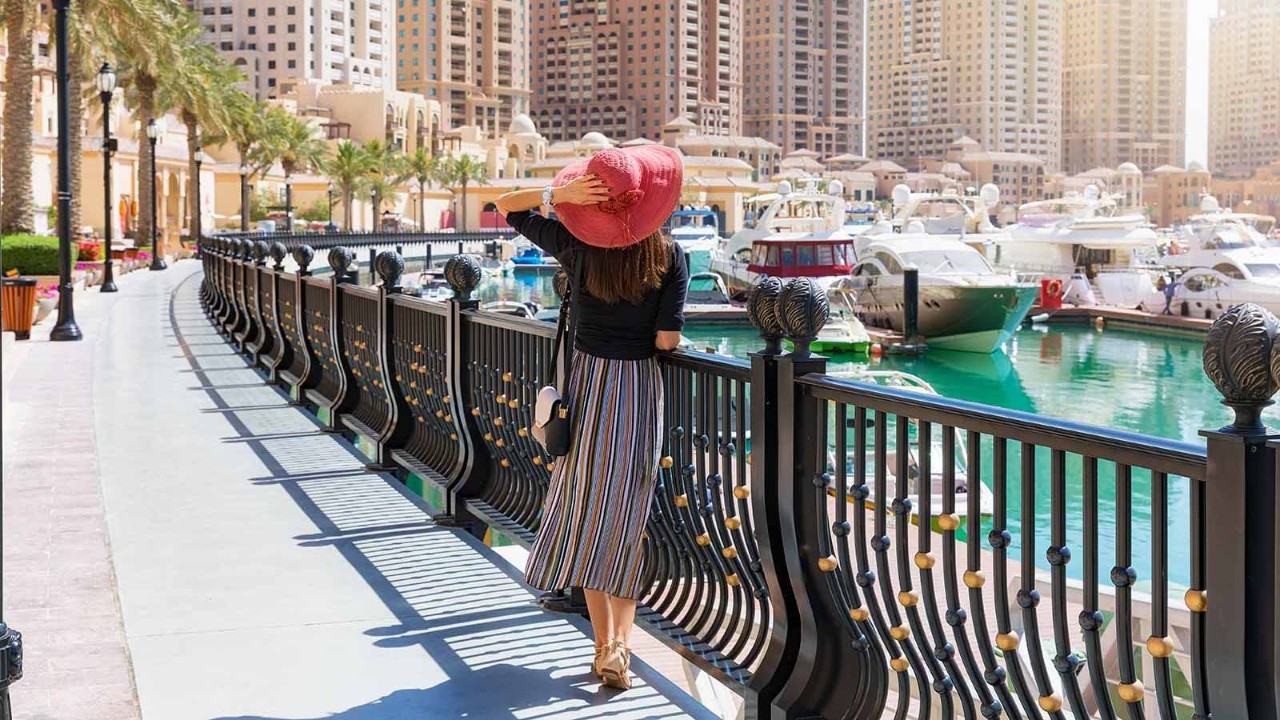
Neil Johnson is editor of ACCA Careers
In full swing globally, the post-pandemic tourism recovery is going a step further in the Middle East. While the United Nations agency UN Tourism expects global tourism to return to prepandemic levels this year, the Middle East has already outpaced pre-Covid trends, with international tourist arrivals in 2023 122% higher than in 2019.
The UAE has maintained its appeal for well-heeled holidaymakers, while Saudi Arabia, driven by its Vision 2030 strategy (see boxout), has burst onto the international scene. Qatar is enjoying success as a destination for mega events, such as the World Cup (which Saudi Arabia is expected to host in 2034), and Oman is set to invest US$31bn in its tourism sector to 2040, driven no doubt by a 38% year-on-year increase in foreign visitors to four million in 2023.
‘For Saudi and Oman it’s about jobs, for Qatar and UAE it may be more about tax receipts and GDP contribution’
Bahrain recently inked an agreement with neighbour Saudi Arabia to collaborate on attracting international visitors. Such collaborative as opposed to competitive thinking is a development that Dubai-based Nicolas Mayer, PwC’s global tourism and hospitality leader, expects will one day lead to the region being viewed as a ‘cluster’ rather like Europe, where people visit several countries with different but complementary offerings in one trip. ‘There’s probably 20% competition and 80% collaboration, which is what’s happening in the Gulf,’ he says.
The choice of development model varies. ‘Saudi Arabia, Egypt and Oman have large surface areas and big domestic populations, so they’re trying to create jobs. Whereas for Bahrain, Qatar and the UAE, it may be more about tax receipts and GDP contribution,’ Mayer says.
Fun in the sun
ACCA members locally can attest to the boom. ‘We have witnessed a sudden spike in enquiries, especially from start-ups, as well as for brand expansions and M&A,’ says Dubai-based Kunal Uttamchandani ACCA, founder of Ontask Accounting and Financial Services.
For Aylin Kabasakal ACCA, group CFO EMEA and Asia at Dubai-based hospitality management business Bulldozer Group, the boom is a significant factor in regional strategy. ‘It’s created a favourable environment for businesses in our sector and directly informed our decision to open four more venues in Dubai this year. Success in the UAE, our cornerstone market, as well as the potential in neighbouring countries, Saudi Arabia in particular, means we’re planning to expand elsewhere in the region.’
Shahana Khan ACCA, internal audit manager at Qatar Airways, says competition among regional airlines is hotting up, with an influx of new products and incentives aimed at an increasingly savvy audience. ‘Technology means customers can make smart choices, so competition is no longer solely about the price of a ticket but the overall package – services offered, comprehensive packages with flight, hotel, activities, etc.’
Authentic and eco-conscious
Salman Sharif FCCA, CFO at property developer FTG Development in Saudi Arabia, describes a market defined by tech-supported experiential travel. ‘Travellers are looking for seamless experiences, with AI and virtual reality for destination exploration making things smoother. Forget run-of-the-mill tours; people crave authenticity and immersion, leading to a rise in cultural and adventure tourism activities – from desert safaris to historical exploration.’
Eco-conscious travel is also on the rise, particularly at the upmarket level the region is synonymous with – ‘luxury with a conscience’ as Sharif puts it.
Bahrain’s 2022–26 strategy continues to invest in ecotourism. Its airport became carbon-neutral in 2022 and funding is going into cultural heritage sites. Meanwhile, the Hilton Bahrain uses recycled materials in staff uniforms, and the Four Seasons recycles all its wastewater to irrigate its gardens. Elsewhere, Saudi Arabia’s Red Sea project will combine conservation with tourism by addressing threats to the 4,000km Red Sea coral reef.
‘Rapid growth presents budgeting, planning and staffing challenges’
The Saudi vision
Foreign arrivals in Saudi Arabia hit 27 million in 2023, a 156% rise since the introduction of a 90-day tourist visa in 2019 that has helped the country meet its Vision 2030 target of 100 million tourism visits (including in-country tourism) seven years ahead of schedule.
The country is investing US$1 trillion over 10 years to boost hotel capacity by 75% (an extra 310,000 rooms) by 2030, with vast sums being spent on international marketing, transport infrastructure, and making towns, cities and cultural heritage sites tourism-ready.
Mega events with global appeal such as the Formula 1 Saudi Arabia Grand Prix in Jeddah in 2024 and the 2030 Expo in Riyadh will further increase visitor numbers.
PwC’s Nicolas Mayer says: ‘Saudi Arabia has passed through its strategy phase and is now well into its activation phase, accelerating the speed of development.’
Challenges and opportunities
A rapidly developing sector brings nuanced challenges for businesses. For Uttamchandani, it’s all about managing huge client growth. ‘Businesses are achieving annual targets in just a matter of months, which is great but presents challenges around budgeting, planning and staffing. We’re able to help them navigate these spikes in performance and demand, helping them focus on their niche and strategy.’
Burgeoning start-ups and rapid growth is a point Mayer highlights and an exciting prospect for finance professionals who seek a fast-paced hard-working environment. ‘You get to do here in five years what might take 20 years in more mature markets. There are large multibillion-dollar corporations in the UAE and Saudi Arabia that just 10–20 years ago were start-ups.’
He’s quick to point out, though, that it’s not the Wild West. ‘The financial system here is very robust – there’s a lot of experience; it’s the scaling that’s testing everybody.’
‘Fostering local talent is crucial – as is recruiting international specialists’
Yet perhaps the biggest challenge for finance leaders in the region is talent. ‘We’re really seeing what can happen when economies develop quicker than they can develop their people,’ Mayer says.
Sharif says it is crucial to develop local talent while attracting and retaining international finance specialists to provide a blend of global best practices and local market understanding.
‘The region needs to develop specialised auditing and advisory services tailored to the hospitality sector, and training programmes to equip local professionals with the necessary skills; and it needs to create an attractive environment for international hotel finance specialists to contribute their expertise.’
Recommended reading

Leading with charisma
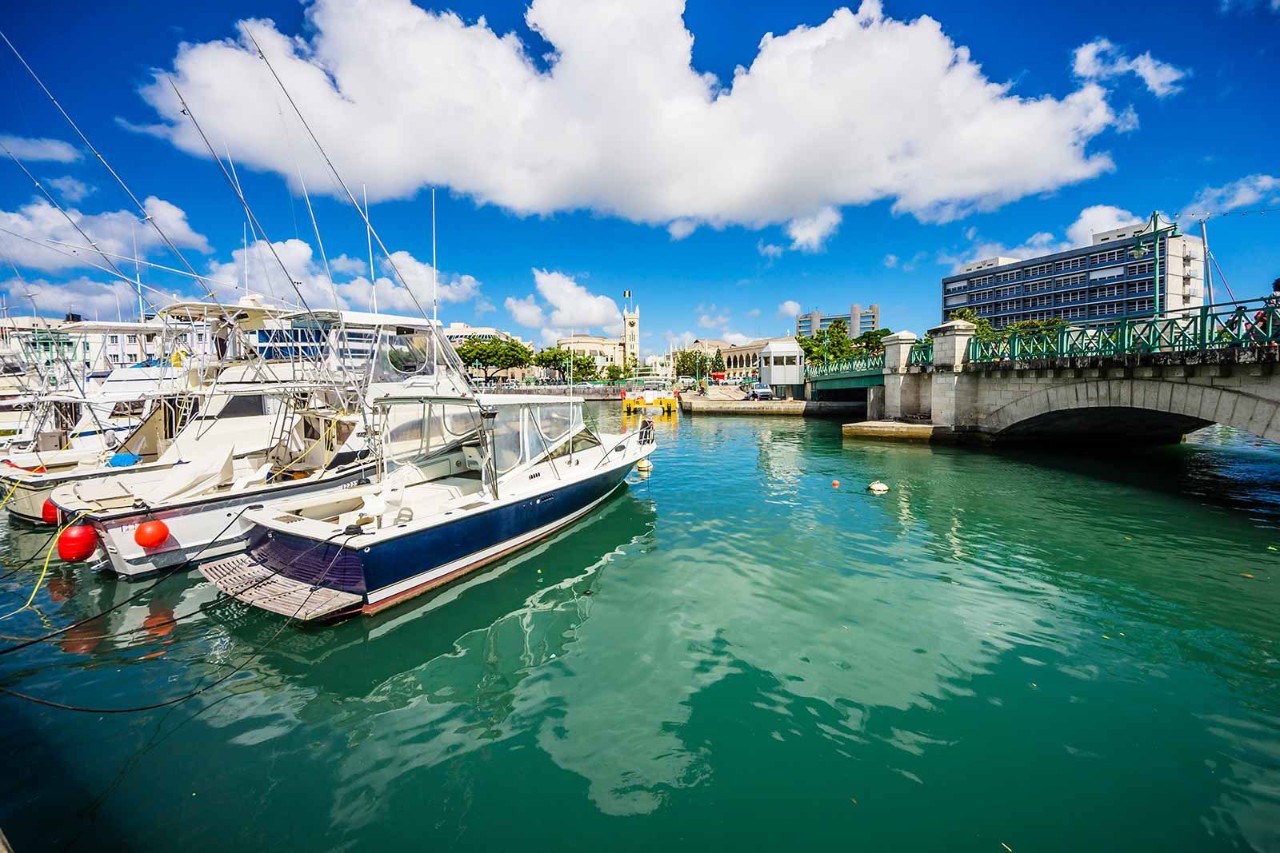
In business
World corporate tax rates, advertisement.
- Financial management and forecasting
- Sustainability
- Tax and tax management
- Professional skills
In this Issue

May 2024 issue
Flour power.
Saudi Arabia’s Vision 2030 Is Too Expensive For Tourists – And Everyone Knows It
Josh Corder , Skift
May 1st, 2024 at 9:31 AM EDT
Fancy a stay in the heart of Arabia? It'll cost you.
Josh Corder
Are Saudi Arabia’s new tourism offerings too pricey? That’s the sentiment on the ground at the Future Hospitality Summit (FHS) in Riyadh this week.
Between now and the end of the decade, 320,000 new hotel rooms are expected to open in Saudi Arabia. According to Knight Frank, 82% of those new rooms are in the luxury and upscale segments. And 66% of Saudi’s current 149,400 rooms are also upscale and luxury.
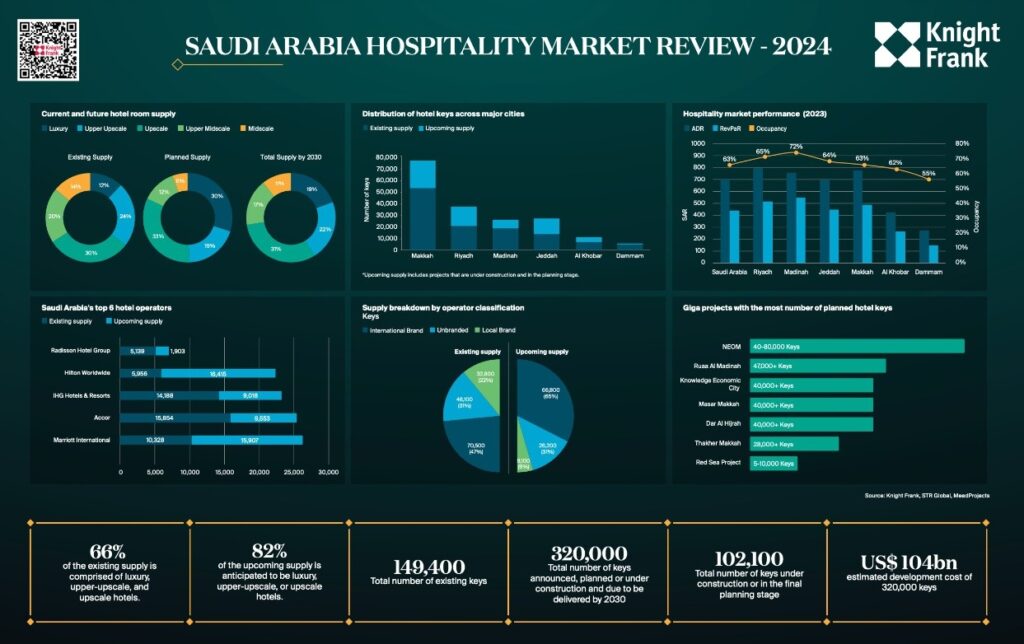
Saudi eventually wants 70 million international tourists to come visit. But it was only in 2019 that it opened for tourism at all. Saudi had 27 million international visitors in 2023 – many of them came for religious travel rather than stays at newly-developed leisure hubs.
‘Ego Projects Are Going Away’
Radisson’s regional vice president of development, Elie Milky said on a panel at the summit that “ego projects” by private investors are becoming less prevalent.
“Emotional and ego investments are going away. We need to be in line with the tourism strategy but we need to help it in not only promoting five-star categories,” Milky said. “It’s too risky for some investors to go into a place with a five-star hotel. It might be a nice idea for a five-star hotel, but you might not see return on investment.”
Many developments are being funded by Saudi’s Public Investment Fund (PIF). Chaired by the crown prince Mohammed bin Salman, PIF owns and develops tourism sites such as Neom, Diriyah Gate and The Red Sea – three leisure destinations with a swell of luxury facilities.
“Giga-projects” are being built solely with five-star hotels. Some of them are planning to cap visitation as well, making it even tougher to accommodate 70 million visitors.
The Red Sea is one such example: The Maldives-like project along the Saudi coastline is planning to open 50 luxury hotels. The plan is to open 16 hotels by 2025, and another 34 before 2030.
To date, every hotel announced there has been a luxury name.
Despite costing billions, The Red Sea is going to chip in one-seventieth towards achieving international tourism goals. The site will limit visits upon completion to protect the environment.
‘Mid-Markets Democratize Travel’
With luxury projects not moving the needle much in achieving visitor goals, hotel developers are hammering for more economical brands.
At another session at the summit this week, Wyndham’s regional MD, Panos Loupasis said: “Saudi will become exclusive. That’s a problem. If you want to attract people, and have them come again and again, visit more cities, it can’t be so exclusive. Three-star hotels are enablers for travelers. They democratize travel.”
“The market is not well-educated in mid-scale brands. There seems to be a strong focus on luxury in Saudi,” added Leva Hotels CEO JS Anand, a Dubai-based operator serving mid-scale.
“Not everybody will pay $2,000 a night,” he added.
The CEO of a privately-held hotel developer and owner had similar thoughts. “Mid-market hotels are the core accommodation in any city. A lot of people in the segment are just looking for glitz and glamor rather than a real investment strategy,” said Tashyid Urban Development CEO Falih Motasim Hajaj.
Following the publication of this article, a spokesperson from Saudi Tourism Authority sent a statement to Skift acknowledging the importance of luxury accommodation but also the range of mid-market choices in the country.
“Luxury hotels and products are a key part of what we are developing in Saudi, and we know that for some of our target audiences, both domestically and internationally, having luxury destination hotels is essential to their experience,” the spokesperson said. “However, our strategy and ambition are much bigger than that, as set out in our national tourism strategy. It is not just about luxury, it’s about building a year-round offering that caters for visitors across all tiers.”
Luxury First, Mid-market Second
Accor is one of the biggest players in growing Saudi’s tourism and hospitality infrastructure. The French operator wants an additional 45 properties with more than 9,800 rooms by 2030 in Saudi.
In the major locations like the giga-projects, these will be luxury hotels, according to Accor’s Group Deputy CEO and Premium, Midscale & Economy Division CEO, Jean-Jacques Morin.
“Luxury is in the big leisure projects – Neom, Red Sea, Diriyah and so on,” he said. “We are by far the largest operator in the holy cities as well… While in second-tier cities we have a strategy for premium, midscale and economy.”
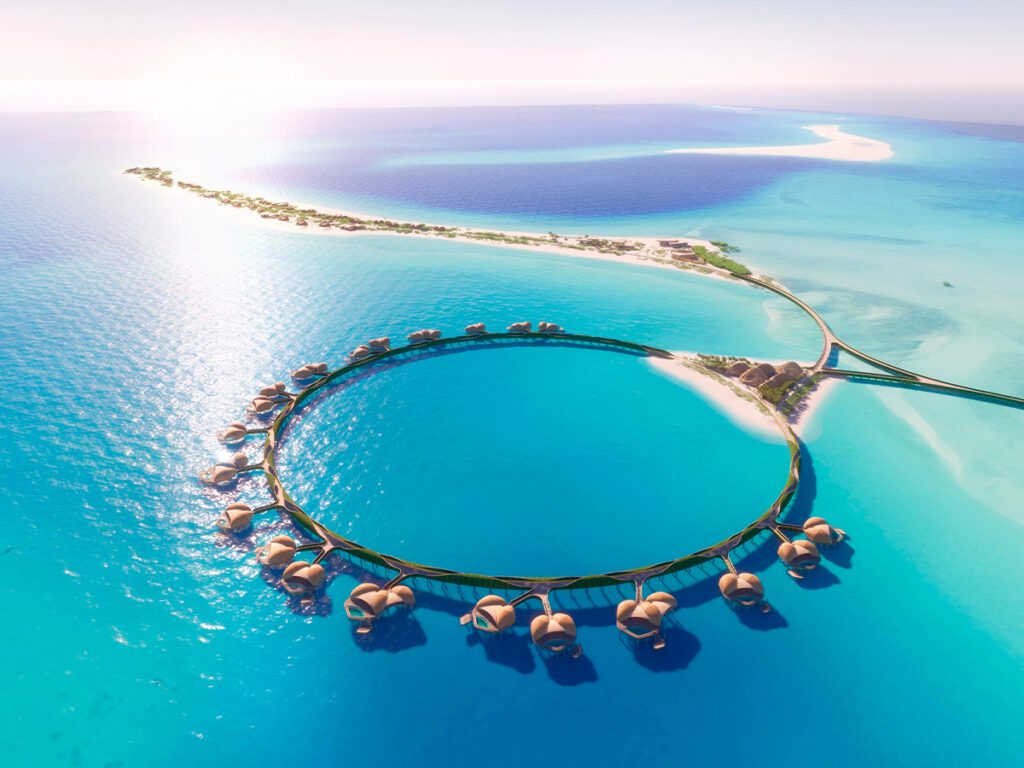
Are There Any Mid-market Hotels Opening Up in Giga-projects?
There are a few mid-market hotels, but they mostly act as lodging for incoming consultants, contractors and architects. The Red Sea has Turtle Bay hotel to put up staff in, while Trojena – one part of the Neom project – has a Hampton by Hilton up and running.
Even this hotel is commanding high rates as the only hotel for business people to use in the area.
“In terms of today, converting mid-scale hotels will drive super-normal profits,” said Hilton’s Managing Director, Development, Middle East & North Africa, Amir Lababedi. “As much as we can, we will convert existing buildings. Trojena has no hotels that any contractor can use. That’s why we brought the Hampton.”
He added that Hilton is looking at many of Saudi’s existing budget hotels as options for its new Spark brand.
Elsewhere in Neom, Oxagon has a Yotel on the way, again designed mostly for professionals.
How Many Annual Visits Saudi Projects Expect by 2030 :
- The Red Sea: 1 million
- Amaala: 500,000
- Trojena (a part of Neom): 700,000
- Sindalah (a part of Neom): 876,000
- Neom altogether: 5 million
- Diriyah: 50 million (including domestic day trips)
The Daily Newsletter
Our daily coverage of the global travel industry. Written by editors and analysts from across Skift’s brands.
Have a confidential tip for Skift? Get in touch
Tags: diriyah , middle east report , neom , saudi news , Saudi Tourism , The Red Sea
Photo credit: Riyadh

Welcome to The Saudi Boom, The No.1 Business Site & Newsletter in Saudi Arabia dedicated to The Growth of The Kingdom of Saudi Arabia.
The Saudi Boom is your one stop source for the latest and most comprehensive updates on the incredible transformation and growth in the Kingdom of Saudi Arabia.
Our Mission is to provide you with the latest in depth insights into the dynamic developments shaping the growth of Saudi Arabia spanning across Hospitality, Tourism, Real Estate, Business, The Public Investment Fund (PIF), Artificial intelligence, Electric Vehicles, Company News and more.
The Saudi Boom is an unprecedented collaboration between Saudi Fresh Healthcare for Communication and Information Technology in Riyadh and Exponential Projects Ltd of London. The Saudi Boom is the only business site dedicated solely to the growth of Saudi Arabia.

Our Mission
Whether you are interested in the latest investments by the PIF, the unveiling of ground breaking business ventures, or new Tourism Hotspots, we’ve got you covered.
Latest Updates: We are committed to delivering the most up-to-date information. Our team works diligently to keep you informed about the latest developments and opportunities in Saudi Arabia, ensuring you are always ahead of the curve.
Key People of Influence: Our team bring you interviews and insights from the movers and shakers inside Saudi Arabia including Top CEOs, Entrepreneurs and Business Leaders.
Expert Insights: Our team comprises seasoned experts who are passionate about Saudi Arabia’s transformation. They bring you well-researched articles, analyses, and commentaries, providing you with a deep understanding of the events and trends shaping the growth of Saudi Arabia.
Engaging Content: We understand that information is best absorbed when it’s engaging and accessible. That’s why we utilize various formats, including articles, videos, infographics, and interviews, to present our content in a way that suits your preferences.
What We Cover
Hospitality: Discover the remarkable evolution of Saudi Arabia’s hospitality industry, from the opening of luxury resorts, the emergence of Saudi Arabia as yachting destination and the growth of eco-tourism.
The Public Investment Fund (PIF): Stay up-to-date on the PIF’s investments, projects, and contributions to Saudi Arabia’s economic diversification including NEOM, Red Sea Global, Diriyah and more.
Business: Dive into the world of Saudi business with insights into innovative start ups, major corporate endeavors, real estate and emerging economic sectors that are driving the nation’s prosperity.

Get Featured
New Projects: Explore the ground breaking infrastructure projects and urban developments that are reshaping the Saudi landscape.
Tourism: Uncover the hidden gems, vibrant festivals, and natural wonders that make Saudi Arabia an exciting tourist destination.
Companies: Gain knowledge about the corporate giants, emerging players, and innovative enterprises that are contributing to the nation’s business landscape.
Showcase Your Company: Get your company featured on The Saudi Boom to get in front of Key Decision Makers, Companies and Ideal Customers in Saudi Arabia. Contact Us .
Stay Ahead of The Curve
Subscribe To Our Newsletter, Follow Us on Social Media, and be a part of the conversation. Together, let’s witness the remarkable transformation of the Kingdom of Saudi Arabia.

HOSPITALITY
Red sea global, real estate, become smarter in just 5 minutes.
Get the latest developments on The Saudi Boom straight to your inbox and stay ahead of the curve for free

- Privacy Overview
- Strictly Necessary Cookies
This website uses cookies so that we can provide you with the best user experience possible. Cookie information is stored in your browser and performs functions such as recognising you when you return to our website and helping our team to understand which sections of the website you find most interesting and useful.
Strictly Necessary Cookie should be enabled at all times so that we can save your preferences for cookie settings.
If you disable this cookie, we will not be able to save your preferences. This means that every time you visit this website you will need to enable or disable cookies again.
- Philippines
- South Korea
- The Maldives
- Appointments
- Trade Calendar
- News Archive
- Print Edition
Asian hotel brands bet big on Saudi Arabia

Saudi Arabia’s aggressive development of sites like AlUla, NEOM, Diriyah Gate and more for tourism activities has attracted the attention of hospitality brands with roots in Asia, with several openings coming right up.
Minor Hotels, Dusit Hotels & Resorts, and Banyan Group are among those viewing the destination with optimism.
Minor Hotels has signed deals to open two hotels in Saudi Arabia under its luxury hospitality brand Anantara. The two properties coming up in NEOM’s Trojena and Diriyah Gate are expected to be operational by 2027.
Speaking to TTG Asia at Arabian Travel Market 2024 happening this week, Ian Di Tullio, chief commercial officer, Minor Hotels, said: “Saudi Arabia has incredible resources be it in terms of heritage, culture or nature. It offers tourism experiences that are unmatched. I think Saudi Arabia is going to be among the top 10 tourism (destinations) globally, if not top five, in the next decade or so. We have a number of hospitality projects that we are working on with Saudi Arabia’s Tourism Development Fund (TDF). Over the next 10 years, we plan to expand our presence in Saudi Arabia by adding 30 hotels across various brands in our portfolio.”
Dusit Hotels & Resorts signed its first hotel in Saudi Arabia – Dusit Princess Al Majma’ah, Riyadh – which is expected to be operational by the end of this year or early 2024.
“Saudi Arabian tourism market is growing at a different level. We are excited to open our first hotel in the country. We are currently holding discussions with many interested parties to expand our presence in Saudi Arabia. What holds us in good stead is the fact that as a Thai hospitality brand, there is a good awareness about our hotels in Saudi Arabia as well as the Middle East in general,” said Nichlas Maratos, vice president – commercial, Dusit Hotels & Resorts.
Asian hospitality firms expect the domestic market to drive demand first and foremost.
“We will create tourism destinations within Saudi Arabia for locals to explore. A lot of demand is expected to be generated by the other GCC (Gulf Cooperation Council) countries, followed by India and other Asian markets like China and Thailand. Europe will also contribute to the overall demand,” added Tullio.
Contrary to the widespread belief that Saudi Arabia is solely concentrating on luxury travel, Tullio sees potential for mid-scale to luxury range of accommodation.
Banyan Group currently has one operational property – Banyan Tree AlUla. It is expected to open one more in the kingdom.
Overall, Saudi Arabia has plans to add 250,000 hotel rooms by 2030.

Discover the beauty of Thailand with industry-leading properties from ONYX Hospitality Group
DidaTravel announces strong sales growth across GCC markets ahead of ATM
Positive outlook for Wyndham Hotels & Resorts buoyed by APAC growth

Is Your Business Listed On TTGmice Planner Online?

Advertise with us

Future of Tourism: Digital Travel APAC 2023 Innovation Brief
RELATED ARTICLES
Saudi arabia gains more interest among indonesians, saudi tourism authority, trip.com group to boost inbound travel to saudi, saudi woos malaysia at trade show with new initiatives, un tourism, wttc recognise saudi arabia’s achievement of over 100 million tourists, saudi arabia’s adventure tourism destination to redefine sea sports and leisure experience, land long before time, riyadh scores world expo 2030, saudi intensifies investments in tourism talents, saudi arabia amps up alula’s heritage offerings, tried and tested.

21 Carpenter
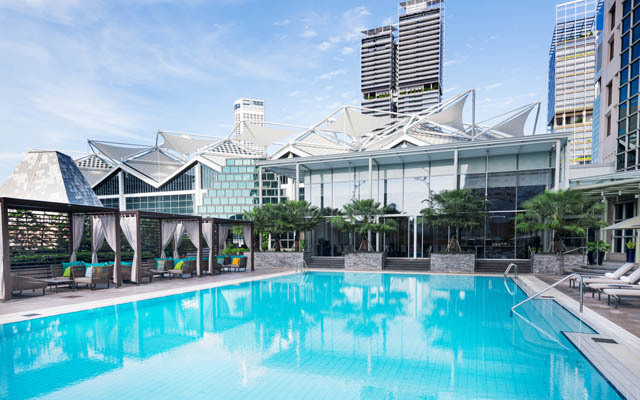
Fun for the family at Conrad Centennial Singapore
What to buy now.

New hotels: Lanson Place Mall of Asia, Hotel Central and more

- TTG Travel Awards
- Privacy Policy
- Terms of Use

All Rights Reserved
Energy CEO said he canceled a $100M contract with Neom when he realized the Saudis were bulldozing villages to make space
- Malcolm Aw said he pulled out of a Neom contract because of alleged Saudi human rights abuses.
- The CEO of Solar Water told BI that he had planned to build solar desalination plants.
- Human rights campaigners say tribe members are being forcibly evicted to make way for the megacity.

A green energy founder pulled out of a $100 million Neom contract after he realized that the Saudis were bulldozing villages to make way for the megacity.
Malcolm Aw, the CEO and founder of Solar Water, told Business Insider that he initially got involved with Neom to help realize its ambitions as a pioneering green energy "eco-city."
Neom is the centerpiece of Saudi ruler Mohammed bin Salman's Vision 2030 project to diversify the Saudi economy away from fossil fuels and transform it into a luxury tourism destination and innovation hub.
However, Aw said he was so appalled at reports of human rights abuses that he canceled the Neom contract in 2022, despite having already built some of his desalination plants there.
"They just, they bulldoze their way right through villages and everything, which is just unbelievable," said Aw.
Aw spoke to BI after BBC News reported that an exiled Saudi colonel said Saudi Arabia authorized the use of lethal force to clear the way for its Neom desert megacity.
Col Rabih Alenezi said he was ordered to evict people living on the land to make way for a part of the project called The Line . The area was mostly populated by the Huwaitat tribe.
The BBC said it was not able to independently verify Alenezi's comments about lethal force.
However, satellite images analyzed by the BBC showed three villages, including schools and hospitals, were destroyed to make way for Neom.
One of the villagers, Abdul Rahim al-Huwaiti, was later reportedly killed by Saudi authorities, said the UN.
"What it tried to do is turn the whole province into Dubai or Qatar or something, but in doing so, they are clearing the people who have been there for years out of the area," said Aw.
Related stories
"These people could be such a contribution to this whole development. You know the villages have all been removed."
Aw, who is a descendant of Tiger Balm founder Aw Boon Haw, told BI that he had initially been drawn to work on the Neom project because of its commitment to green energy and ecology.
Aw's company uses solar energy for desalination, while most desalination plants burn fossil fuels and have been found to pollute oceans. Neom had offered Aw's company, Solar Water, $100m for exclusive rights to use his technology.
Neom's planners say they want to be an"eco-city," with the signature project "The Line" — a vertical mirrored skyscraper cutting through the desert — running on 100% renewable energy and 95% of the land preserved for nature. They claim to be committed to "respecting existing communities and cultural heritage within our region."
But Aw believes the promises are not being fulfilled, and planners are performing a U-turn on their original vision for the city.
"What they're doing is not ethical and what they're doing is they're creating an exclusivity to house wealthy people in a wealthy touristic area. But that wasn't the original idea. The idea was to develop a green scenario," he said.
"The whole idea we came in is to make the place green, and for the people, the local people, the indigenous who have been there for ages, for yonks, to be able to share into development," said Aw. "But then they change course. Suddenly, they are totally different from what we expect to do, and in doing so, they have done a lot of damage."
Neom declined to comment on Aw's claims. The Saudi embassy in the UK did not respond to a request for comment.
Saudi Arabia has been trying to quell public criticism about its Vision 2030 plans .
Last year, BI reported that the crackdown extended to those criticizing the evictions on social media, with Fatima al-Shawarbi sentenced to 30 years in prison for speaking out.
The project has been beset by problems in recent months, with costs spiraling to an estimated $1 trillion and key projects delayed or cut back. In April, Bloomberg reported that Saudi officials were reducing the number of people expected to be living in Neom from around one million to 300,000 by 2030. The report also said the length of The Line could be cut from around 100 miles to one mile.
Aw urged planners to stand by their original ethical and ecological vision.
"You know, we have the technology to solve the [green energy] problem that people are complaining about today. Absolutely. Absolutely. But there's just not the vision or the ethical commitment," he said.
Watch: The true cost of the lithium mining boom powering electric cars
- Main content
- Share full article
For more audio journalism and storytelling, download New York Times Audio , a new iOS app available for news subscribers.
A Plan to Remake the Middle East
While talks for a cease-fire between israel and hamas continue, another set of negotiations is happening behind the scenes..
This transcript was created using speech recognition software. While it has been reviewed by human transcribers, it may contain errors. Please review the episode audio before quoting from this transcript and email [email protected] with any questions.
From New York Times, I’m Michael Barbaro. This is The Daily.
[MUSIC CONTINUES]
Today, if and when Israel and Hamas reach a deal for a ceasefire fire, the United States will immediately turn to a different set of negotiations over a grand diplomatic bargain that it believes could rebuild Gaza and remake the Middle East. My colleague Michael Crowley has been reporting on that plan and explains why those involved in it believe they have so little time left to get it done.
It’s Wednesday, May 8.
Michael, I want to start with what feels like a pretty dizzying set of developments in this conflict over the past few days. Just walk us through them?
Well, over the weekend, there was an intense round of negotiations in an effort, backed by the United States, to reach a ceasefire in the Gaza war.
The latest ceasefire proposal would reportedly see as many as 33 Israeli hostages released in exchange for potentially hundreds of Palestinian prisoners.
US officials were very eager to get this deal.
Pressure for a ceasefire has been building ahead of a threatened Israeli assault on Rafah.
Because Israel has been threatening a military offensive in the Southern Palestinian city of Rafah, where a huge number of people are crowded.
Fleeing the violence to the North. And now they’re packed into Rafah. Exposed and vulnerable, they need to be protected.
And the US says it would be a humanitarian catastrophe on top of the emergency that’s already underway.
Breaking news this hour — very important breaking news. An official Hamas source has told The BBC that it does accept a proposal for a ceasefire deal in Gaza.
And for a few hours on Monday, it looked like there might have been a major breakthrough when Hamas put out a statement saying that it had accepted a negotiating proposal.
Israeli Prime Minister Benjamin Netanyahu says the ceasefire proposal does not meet his country’s requirements. But Netanyahu says he will send a delegation of mediators to continue those talks. Now, the terms —
But those hopes were dashed pretty quickly when the Israelis took a look at what Hamas was saying and said that it was not a proposal that they had agreed to. It had been modified.
And overnight —
Israeli troops stormed into Rafah. Video showing tanks crashing over a sign at the entrance of the city.
— the Israelis launched a partial invasion of Rafah.
It says Hamas used the area to launch a deadly attack on Israeli troops over the weekend.
And they have now secured a border crossing at the Southern end of Gaza and are conducting targeted strikes. This is not yet the full scale invasion that President Biden has adamantly warned Israel against undertaking, but it is an escalation by Israel.
So while all that drama might suggest that these talks are in big trouble, these talks are very much still alive and ongoing and there is still a possibility of a ceasefire deal.
And the reason that’s so important is not just to stop the fighting in Gaza and relieve the suffering there, but a ceasefire also opens the door to a grand diplomatic bargain, one that involves Israel and its Arab neighbors and the Palestinians, and would have very far-reaching implications.
And what is that grand bargain. Describe what you’re talking about?
Well, it’s incredibly ambitious. It would reshape Israel’s relationship with its Arab neighbors, principally Saudi Arabia. But it’s important to understand that this is a vision that has actually been around since well before October 7. This was a diplomatic project that President Biden had been investing in and negotiating actually in a very real and tangible way long before the Hamas attacks and the Gaza war.
And President Biden was looking to build on something that President Trump had done, which was a series of agreements that the Trump administration struck in which Israel and some of its Arab neighbors agreed to have normal diplomatic relations for the first time.
Right, they’re called the Abraham Accords.
That’s right. And, you know, Biden doesn’t like a lot of things, most things that Trump did. But he actually likes this, because the idea is that they contribute to stability and economic integration in the Middle East, the US likes Israel having friends and likes having a tight-knit alliance against Iran.
President Biden agrees with the Saudis and with the Israelis, that Iran is really the top threat to everybody here. So, how can you build on this? How can you expand it? Well, the next and biggest step would be normalizing relations between Israel and Saudi Arabia.
And the Saudis have made clear that they want to do this and that they’re ready to do this. They weren’t ready to do it in the Trump years. But Mohammed bin Salman, the Crown Prince of Saudi Arabia, has made clear he wants to do it now.
So this kind of triangular deal began to take shape before October 7, in which the US, Israel, and Saudi Arabia would enter this three way agreement in which everyone would get something that they wanted.
And just walk through what each side gets in this pre-October 7th version of these negotiations?
So for Israel, you get normalized ties with its most important Arab neighbor and really the country that sets the tone for the whole Muslim world, which is Saudi Arabia of course. It makes Israel feel safer and more secure. Again, it helps to build this alliance against Iran, which Israel considers its greatest threat, and it comes with benefits like economic ties and travel and tourism. And Prime Minister Benjamin Netanyahu has been very open, at least before October 7th, that this was his highest diplomatic and foreign policy priority.
For the Saudis, the rationale is similar when it comes to Israel. They think that it will bring stability. They like having a more explicitly close ally against Iran. There are economic and cultural benefits. Saudi Arabia is opening itself up in general, encouraging more tourism.
But I think that what’s most important to the Crown Prince, Mohammed bin Salman, is what he can get from the United States. And what he has been asking for are a couple of essential things. One is a security agreement whose details have always been a little bit vague, but I think essentially come down to reliable arms supplies from the United States that are not going to be cut off or paused on a whim, as he felt happened when President Biden stopped arms deliveries in 2021 because of how Saudi was conducting its war in Yemen. The Saudis were furious about that.
Saudi Arabia also wants to start a domestic nuclear power program. They are planning for a very long-term future, possibly a post-oil future. And they need help getting a nuclear program off the ground.
And they want that from the US?
And they want that from the US.
Now, those are big asks from the us. But from the perspective of President Biden, there are some really enticing things about this possible agreement. One is that it will hopefully produce more stability in the region. Again, the US likes having a tight-knit alliance against Iran.
The US also wants to have a strong relationship with Saudi Arabia. You know, despite the anger at Mohammed bin Salman over the murder of the Saudi dissident Jamal Khashoggi, the Biden administration recognizes that given the Saudis control over global oil production and their strategic importance in the Middle East, they need to have a good relationship with them. And the administration has been worried about the influence of China in the region and with the Saudis in particular.
So this is an opportunity for the US to draw the Saudis closer. Whatever our moral qualms might be about bin Salman and the Saudi government, this is an opportunity to bring the Saudis closer, which is something the Biden administration sees as a strategic benefit.
All three of these countries — big, disparate countries that normally don’t see eye-to-eye, this was a win-win-win on a military, economic, and strategic front.
That’s right. But there was one important actor in the region that did not see itself as winning, and that was the Palestinians.
[MUSIC PLAYING]
First, it’s important to understand that the Palestinians have always expected that the Arab countries in the Middle East would insist that Israel recognize a Palestinian state before those countries were willing to essentially make total peace and have normal relations with Israel.
So when the Abraham Accords happened in the Trump administration, the Palestinians felt like they’d been thrown under the bus because the Abraham Accords gave them virtually nothing. But the Palestinians did still hold out hope that Saudi Arabia would be their savior. And for years, Saudi Arabia has said that Israel must give the Palestinians a state if there’s going to be a normal relationship between Israel and Saudi Arabia.
Now the Palestinians see the Saudis in discussions with the US and Israel about a normalization agreement, and there appears to be very little on offer for the Palestinians. And they are feeling like they’re going to be left out in the cold here.
Right. And in the minds of the Palestinians, having already been essentially sold out by all their other Arab neighbors, the prospect that Saudi Arabia, of all countries, the most important Muslim Arab country in the region, would sell them out, had to be extremely painful.
It was a nightmare scenario for them. And in the minds of many analysts and US officials, this was a factor, one of many, in Hamas’s decision to stage the October 7th attacks.
Hamas, like other Palestinian leaders, was seeing the prospect that the Middle East was moving on and essentially, in their view, giving up on the Palestinian cause, and that Israel would be able to have friendly, normal relations with Arab countries around the region, and that it could continue with hardline policies toward the Palestinians and a refusal, as Prime Minister Benjamin Netanyahu has said publicly, to accept a Palestinian state.
Right. So Michael, once Hamas carries out the October 7th attacks in an effort to destroy a status quo that it thinks is leaving them less and less relevant, more and more hopeless, including potentially this prospect that Saudi Arabia is going to normalize relations with Israel, what happens to these pre-October 7th negotiations between the US, Saudi Arabia, and Israel?
Well, I think there was a snap assumption that these talks were dead and buried. That they couldn’t possibly survive a cataclysm like this.
But then something surprising happened. It became clear that all the parties were still determined to pull-off the normalization.
And most surprisingly of all, perhaps, was the continued eagerness of Saudi Arabia, which publicly was professing outrage over the Israeli response to the Hamas attacks, but privately was still very much engaged in these conversations and trying to move them forward.
And in fact, what has happened is that the scope of this effort has grown substantially. October 7th didn’t kill these talks. It actually made them bigger, more complicated, and some people would argue, more important than ever.
We’ll be right back.
Michael, walk us through what exactly happens to these three-way negotiations after October 7th that ends up making them, as you just said, more complicated and more important than ever?
Well, it’s more important than ever because of the incredible need in Gaza. And it’s going to take a deal like this and the approval of Saudi Arabia to unlock the kind of massive reconstruction project required to essentially rebuild Gaza from the rubble. Saudi Arabia and its Arab friends are also going to be instrumental in figuring out how Gaza is governed, and they might even provide troops to help secure it. None of those things are going to happen without a deal like this.
Fascinating.
But this is all much more complicated now because the price for a deal like this has gone up.
And by price, you mean?
What Israel would have to give up. [MUSIC PLAYING]
From Saudi Arabia’s perspective, you have an Arab population that is furious at Israel. It now feels like a really hard time to do a normalization deal with the Israelis. It was never going to be easy, but this is about as bad a time to do it as there has been in a generation at least. And I think that President Biden and the people around him understand that the status quo between Israel and the Palestinians is intolerable and it is going to lead to chaos and violence indefinitely.
So now you have two of the three parties to this agreement, the Saudis and the Americans, basically asking a new price after October 7th, and saying to the Israelis, if we’re going to do this deal, it has to not only do something for the Palestinians, it has to do something really big. You have to commit to the creation of a Palestinian state. Now, I’ll be specific and say that what you hear the Secretary of State, Antony Blinken, say is that the agreement has to include an irreversible time-bound path to a Palestinian state.
We don’t know exactly what that looks like, but it’s some kind of a firm commitment, the likes of which the world and certainly the Israelis have not made before.
Something that was very much not present in the pre-October 7th vision of this negotiation. So much so that, as we just talked about, the Palestinians were left feeling completely out in the cold and furious at it.
That’s right. There was no sign that people were thinking that ambitiously about the Palestinians in this deal before October 7th. And the Palestinians certainly felt like they weren’t going to get much out of it. And that has completely changed now.
So, Michael, once this big new dimension after October 7th, which is the insistence by Saudi Arabia and the US that there be a Palestinian state or a path to a Palestinian state, what is the reaction specifically from Israel, which is, of course, the third major party to this entire conversation?
Well, Israel, or at least its political leadership, hates it. You know, this is just an extremely tough sell in Israel. It would have been a tough sell before October 7th. It’s even harder now.
Prime Minister Benjamin Netanyahu is completely unrepentantly open in saying that there’s not going to be a Palestinian state on his watch. He won’t accept it. He says that it’s a strategic risk to his country. He says that it would, in effect, reward Hamas.
His argument is that terrorism has forced a conversation about statehood onto the table that wasn’t there before October 7th. Sure, it’s always in the background. It’s a perennial issue in global affairs, but it was not something certainly that the US and Israel’s Arab neighbors were actively pushing. Netanyahu also has — you know, he governs with the support of very right-wing members of a political coalition that he has cobbled together. And that coalition is quite likely to fall apart if he does embrace a Palestinian state or a path to a Palestinian state.
Now, he might be able to cobble together some sort of alternative, but it creates a political crisis for him.
And finally, you know, I think in any conversation about Israel, it’s worth bearing in mind something you hear from senior US officials these days, which is that although there is often finger pointing at Netanyahu and a desire to blame Netanyahu as this obstructionist who won’t agree to deals, what they say is Netanyahu is largely reflecting his population and the political establishment of his country, not just the right-wingers in his coalition who are clearly extremist.
But actually the prevailing views of the Israeli public. And the Israeli public and their political leaders across the spectrum right now with few exceptions, are not interested in talking about a Palestinian state when there are still dozens and dozens of Israeli hostages in tunnels beneath Gaza.
So it very much looks like this giant agreement that once seemed doable before October 7th might be more important to everyone involved than ever, given that it’s a plan for rebuilding Gaza and potentially preventing future October 7th’s from happening, but because of this higher price that Israel would have to pay, which is the acceptance of a Palestinian state, it seems from everything you’re saying, that this is more and more out of reach than ever before and hard to imagine happening in the immediate future. So if the people negotiating it are being honest, Michael, are they ready to acknowledge that it doesn’t look like this is going to happen?
Well, not quite yet. As time goes by, they certainly say it’s getting harder and harder, but they’re still trying, and they still think there’s a chance. But both the Saudis and the Biden administration understand that there’s very little time left to do this.
Well, what do you mean there’s very little time left? It would seem like time might benefit this negotiation in that it might give Israel distance from October 7th to think potentially differently about a Palestinian state?
Potentially. But Saudi Arabia wants to get this deal done in the Biden administration because Mohammed bin Salman has concluded this has to be done under a Democratic president.
Because Democrats in Congress are going to be very reluctant to approve a security agreement between the United States and Saudi Arabia.
It’s important to understand that if there is a security agreement, that’s something Congress is going to have to approve. And you’re just not going to get enough Democrats in Congress to support a deal with Saudi Arabia, who a lot of Democrats don’t like to begin with, because they see them as human rights abusers.
But if a Democratic president is asking them to do it, they’re much more likely to go along.
Right. So Saudi Arabia fears that if Biden loses and Trump is president, that those same Democrats would balk at this deal in a way that they wouldn’t if it were being negotiated under President Biden?
Exactly. Now, from President Biden’s perspective, politically, think about a president who’s running for re-election, who is presiding right now over chaos in the Middle East, who doesn’t seem to have good answers for the Israeli-Palestinian question, this is an opportunity for President Biden to deliver what could be at least what he would present as a diplomatic masterstroke that does multiple things at once, including creating a new pathway for Israel and the Palestinians to coexist, to break through the logjam, even as he is also improving Israel’s relations with Saudi Arabia.
So Biden and the Crown Prince hope that they can somehow persuade Bibi Netanyahu that in spite of all the reasons that he thinks this is a terrible idea, that this is a bet worth taking on Israel’s and the region’s long-term security and future?
That’s right. Now, no one has explained very clearly exactly how this is going to work, and it’s probably going to require artful diplomacy, possibly even a scenario where the Israelis would agree to something that maybe means one thing to them and means something else to other people. But Biden officials refuse to say that it’s hopeless and they refuse to essentially take Netanyahu’s preliminary no’s for an answer. And they still see some way that they can thread this incredibly narrow needle.
Michael, I’m curious about a constituency that we haven’t been talking about because they’re not at the table in these discussions that we are talking about here. And that would be Hamas. How does Hamas feel about the prospect of such a deal like this ever taking shape. Do they see it as any kind of a victory and vindication for what they did on October 7th?
So it’s hard to know exactly what Hamas’s leadership is thinking. I think they can feel two things. I think they can feel on the one hand, that they have established themselves as the champions of the Palestinian people who struck a blow against Israel and against a diplomatic process that was potentially going to leave the Palestinians out in the cold.
At the same time, Hamas has no interest in the kind of two-state solution that the US is trying to promote. They think Israel should be destroyed. They think the Palestinian state should cover the entire geography of what is now Israel, and they want to lead a state like that. And that’s not something that the US, Saudi Arabia, or anyone else is going to tolerate.
So what Hamas wants is to fight, to be the leader of the Palestinian people, and to destroy Israel. And they’re not interested in any sort of a peace process or statehood process.
It seems very clear from everything you’ve said here that neither Israel nor Hamas is ready to have the conversation about a grand bargain diplomatic program. And I wonder if that inevitably has any bearing on the ceasefire negotiations that are going on right now between the two of them that are supposed to bring this conflict to some sort of an end, even if it’s just temporary?
Because if, as you said, Michael, a ceasefire opens the door to this larger diplomatic solution, and these two players don’t necessarily want that larger diplomatic solution, doesn’t that inevitably impact their enthusiasm for even reaching a ceasefire?
Well, it certainly doesn’t help. You know, this is such a hellish problem. And of course, you first have the question of whether Israel and Hamas can make a deal on these immediate issues, including the hostages, Palestinian prisoners, and what the Israeli military is going to do, how long a ceasefire might last.
But on top of that, you have these much bigger diplomatic questions that are looming over them. And it’s not clear that either side is ready to turn and face those bigger questions.
So while for the Biden administration and for Saudi Arabia, this is a way out of this crisis, these larger diplomatic solutions, it’s not clear that it’s a conversation that the two parties that are actually at war here are prepared to start having.
Well, Michael, thank you very much. We appreciate it.
On Tuesday afternoon, under intense pressure from the US, delegations from Israel and Hamas arrived in Cairo to resume negotiations over a potential ceasefire. But in a statement, Israel’s Prime Minister Benjamin Netanyahu made clear that even with the talks underway, his government would, quote, “continue to wage war against Hamas.”
Here’s what else you need to know today. In a dramatic day of testimony, Stormy Daniels offered explicit details about an alleged sexual encounter with Donald Trump that ultimately led to the hush money payment at the center of his trial. Daniels testified that Trump answered the door in pajamas, that he told her not to worry that he was married, and that he did not use a condom when they had sex.
That prompted lawyers for Trump to seek a mistrial based on what they called prejudicial testimony. But the judge in the case rejected that request. And,
We’ve seen a ferocious surge of anti-Semitism in America and around the world.
In a speech on Tuesday honoring victims of the Holocaust, President Biden condemned what he said was the alarming rise of anti-Semitism in the United States after the October 7th attacks on Israel. And he expressed worry that too many Americans were already forgetting the horrors of that attack.
The Jewish community, I want you to know I see your fear, your hurt, and your pain. Let me reassure you, as your president, you’re not alone. You belong. You always have and you always will.
Today’s episode was produced by Nina Feldman, Clare Toeniskoetter, and Rikki Novetsky. It was edited by Liz O. Baylen, contains original music by Marion Lozano, Elisheba Ittoop, and Dan Powell, and was engineered by Alyssa Moxley. Our theme music is by Jim Brunberg and Ben Landsverk of Wonderly.
That’s it for The Daily. I’m Michael Barbaro. See you tomorrow.

- May 10, 2024 • 27:42 Stormy Daniels Takes the Stand
- May 9, 2024 • 34:42 One Strongman, One Billion Voters, and the Future of India
- May 8, 2024 • 28:28 A Plan to Remake the Middle East
- May 7, 2024 • 27:43 How Changing Ocean Temperatures Could Upend Life on Earth
- May 6, 2024 • 29:23 R.F.K. Jr.’s Battle to Get on the Ballot
- May 3, 2024 • 25:33 The Protesters and the President
- May 2, 2024 • 29:13 Biden Loosens Up on Weed
- May 1, 2024 • 35:16 The New Abortion Fight Before the Supreme Court
- April 30, 2024 • 27:40 The Secret Push That Could Ban TikTok
- April 29, 2024 • 47:53 Trump 2.0: What a Second Trump Presidency Would Bring
- April 26, 2024 • 21:50 Harvey Weinstein Conviction Thrown Out
- April 25, 2024 • 40:33 The Crackdown on Student Protesters
Hosted by Michael Barbaro
Featuring Michael Crowley
Produced by Nina Feldman , Clare Toeniskoetter and Rikki Novetsky
Edited by Liz O. Baylen
Original music by Marion Lozano , Elisheba Ittoop and Dan Powell
Engineered by Alyssa Moxley
Listen and follow The Daily Apple Podcasts | Spotify | Amazon Music | YouTube
If and when Israel and Hamas reach a deal for a cease-fire, the United States will immediately turn to a different set of negotiations over a grand diplomatic bargain that it believes could rebuild Gaza and remake the Middle East.
Michael Crowley, who covers the State Department and U.S. foreign policy for The Times, explains why those involved in this plan believe they have so little time left to get it done.
On today’s episode

Michael Crowley , a reporter covering the State Department and U.S. foreign policy for The New York Times.

Background reading :
Talks on a cease-fire in the Gaza war are once again at an uncertain stage .
Here’s how the push for a deal between Israel and Saudi Arabia looked before Oct. 7 .
From early in the war, President Biden has said that a lasting resolution requires a “real” Palestinian state .
Here’s what Israeli officials are discussing about postwar Gaza.
There are a lot of ways to listen to The Daily. Here’s how.
We aim to make transcripts available the next workday after an episode’s publication. You can find them at the top of the page.
The Daily is made by Rachel Quester, Lynsea Garrison, Clare Toeniskoetter, Paige Cowett, Michael Simon Johnson, Brad Fisher, Chris Wood, Jessica Cheung, Stella Tan, Alexandra Leigh Young, Lisa Chow, Eric Krupke, Marc Georges, Luke Vander Ploeg, M.J. Davis Lin, Dan Powell, Sydney Harper, Mike Benoist, Liz O. Baylen, Asthaa Chaturvedi, Rachelle Bonja, Diana Nguyen, Marion Lozano, Corey Schreppel, Rob Szypko, Elisheba Ittoop, Mooj Zadie, Patricia Willens, Rowan Niemisto, Jody Becker, Rikki Novetsky, John Ketchum, Nina Feldman, Will Reid, Carlos Prieto, Ben Calhoun, Susan Lee, Lexie Diao, Mary Wilson, Alex Stern, Dan Farrell, Sophia Lanman, Shannon Lin, Diane Wong, Devon Taylor, Alyssa Moxley, Summer Thomad, Olivia Natt, Daniel Ramirez and Brendan Klinkenberg.
Our theme music is by Jim Brunberg and Ben Landsverk of Wonderly. Special thanks to Sam Dolnick, Paula Szuchman, Lisa Tobin, Larissa Anderson, Julia Simon, Sofia Milan, Mahima Chablani, Elizabeth Davis-Moorer, Jeffrey Miranda, Renan Borelli, Maddy Masiello, Isabella Anderson and Nina Lassam.
Michael Crowley covers the State Department and U.S. foreign policy for The Times. He has reported from nearly three dozen countries and often travels with the secretary of state. More about Michael Crowley
Advertisement
We've detected unusual activity from your computer network
To continue, please click the box below to let us know you're not a robot.
Why did this happen?
Please make sure your browser supports JavaScript and cookies and that you are not blocking them from loading. For more information you can review our Terms of Service and Cookie Policy .
For inquiries related to this message please contact our support team and provide the reference ID below.
Text: A A A Print Society
Holiday travels bolster world tourism industry.
Chinese holidays have injected impetus into the world economy, with the just-concluded May Day holiday bringing a strong burst of tourism growth to domestic as well as overseas destinations, travel experts said.
They added that the holiday's prosperity marks the all-around recovery of the nation's tourism industry.
The holiday brought good tidings from travel agencies, which said that long-distance tour products were hot sellers over the five-day holiday, which ended on Sunday. The holiday's good performance is also expected to promote the healthier, more sustainable development of the industry.
More Chinese people chose to spend the break at overseas destinations. Travel portal Qunar said that countries and regions in and near Central Asia and in Europe were hot choices, with flight bookings to Saudi Arabia and Egypt seeing triple growth year-on-year on the platform. Flight sales heading to some European destinations, including the United Kingdom, Hungary, Ireland, Spain and Croatia, doubled at Qunar over the holiday.
The recent currency declines of the Japanese yen made the nation one of the top choices for Chinese travelers, who went on sightseeing tours and shopping sprees, according to Qunar. Traditionally popular overseas destinations such as Thailand and Singapore were also overwhelmed by Chinese travelers during the holiday.
"The popularity and prosperity of overseas destinations with shorter travel times have exceeded our expectations. I think the main reasons lie in the adding of international flights, more friendly visa policies for Chinese people, and the longer duration of the holiday," said Qi Chunguang, vice-president of travel portal Tuniu.
Domestic scenic spots also witnessed a travel boom. Shanghai, Beijing and the tropical coastal city of Sanya in the southern island province of Hainan were the top three choices on Tuniu, while some inland provinces with cultural heritage or special cuisines went viral as well, according to the platform.
During her holiday trip to Datong in North China's Shanxi province, Wei Jiajia wore a mamianqun, a Chinese traditional skirt, while visiting the Yungang Grottoes, a UNESCO World Heritage site with a history of about 1,600 years.
Wei said she gained a better understanding of the cultural relics by wearing the dress, and she felt like she was a messenger of traditional Chinese culture.
Xiao Peng, a researcher at Qunar, said that Chinese travelers have shown more balanced consumption preferences this holiday, leaving no destinations "untapped or unheard of", and tourism services chains have stabilized and seen a good recovery.
"Our figures show that reception capacities of airlines, trains, hotels and rural homestays registered a big boost this holiday. The prosperity of the May Day holiday marks a full recovery of the tourism market, which will also bring a healthier and more sustainable development of the tourism industry," he said.

In Numbers: Emerging Trends in Holiday Tourism

Insights | Nobel laureate: China climate policies promote EV success

First batch of images captured by China's Einstein Probe satellite released
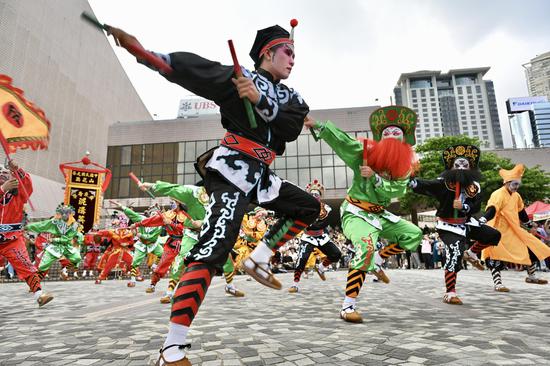
Traditional Yingge folk dance staged in Hong Kong

Azalea flowers bloom in mist-shrouded mountain in C China
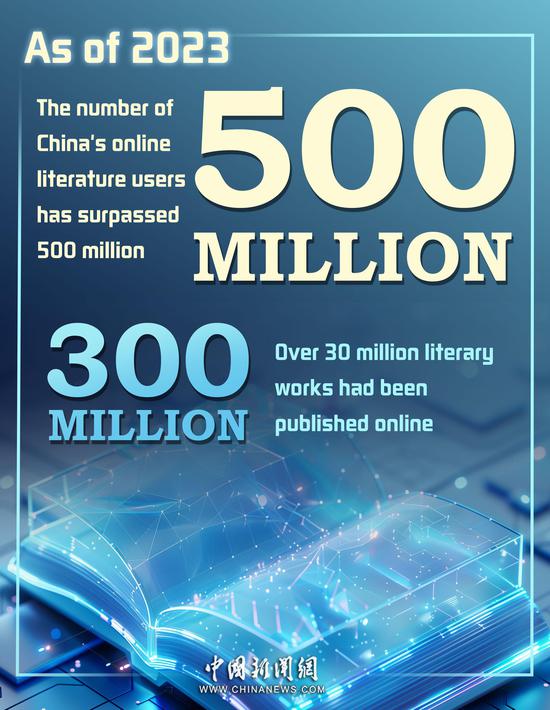
In Numbers: China's online literature users exceed 500 million

China's Shenzhou-17 astronauts to return to earth on April 30
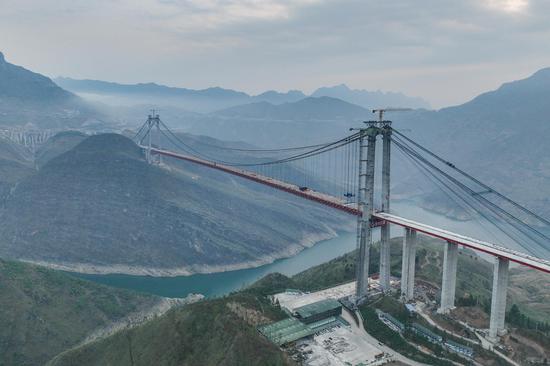
Zangke River bridge successfully connected in Guizhou

Themed show showcases costumes unearthed from archaeological sites in Beijing
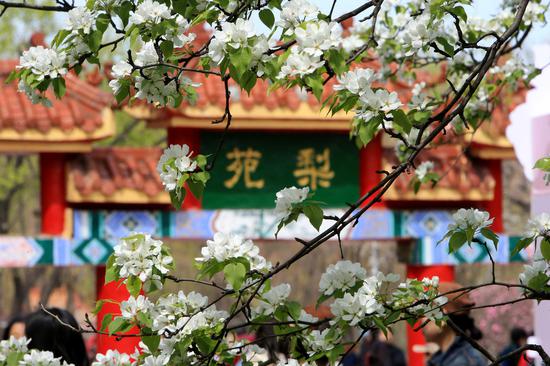
138-year-old pear tree in full blossom in NE China
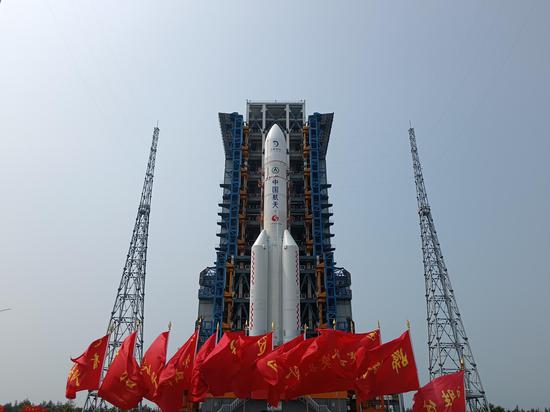
China's Chang'e-6 lunar probe ready to launch

International Horticultural Exhibition 2024 Chengdu opens to visitors
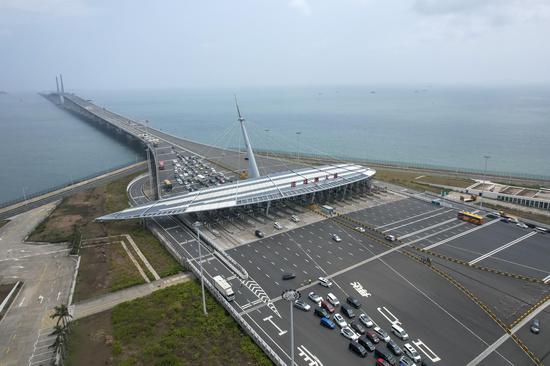
Hong Kong-Zhuhai-Macao Bridge receives over 10 mln vehicles

Olympic flame handover ceremony marks transition from Greece to Paris 2024

World's first cable-stayed bridge in alpine canyon landscape

China successfully launches Shenzhou-18 crewed spaceship

Four swivel bridges rotate into place in Sichuan
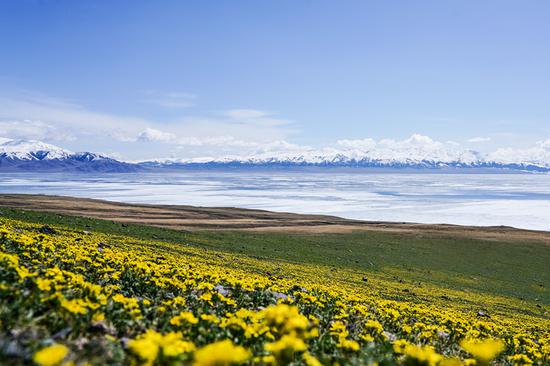
Blooming flowers decorate Sayram Lake in Xinjiang
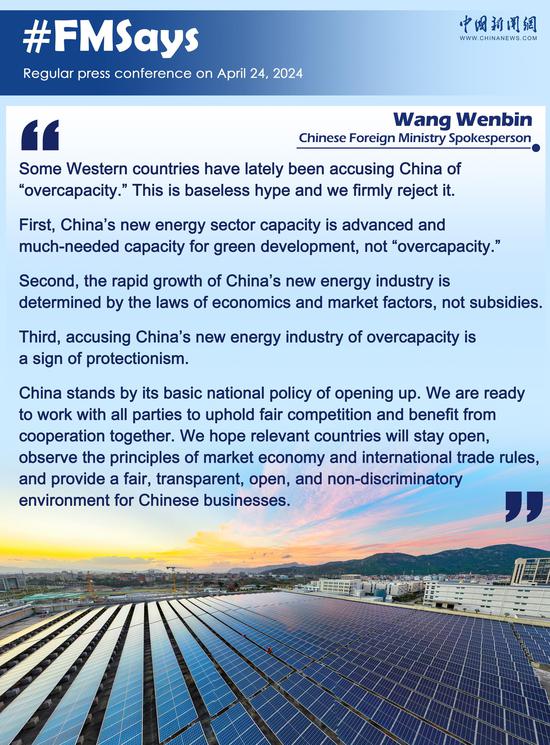
Chinese FM spokesperson refutes western accusation of 'overcapacity'

China's Shenzhou-18 crew members meet press
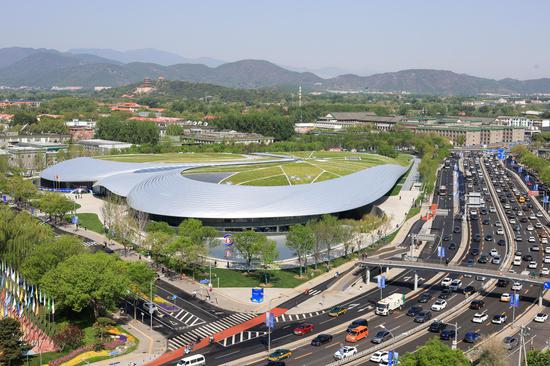
Zhongguancun Forum to kick off in Beijing
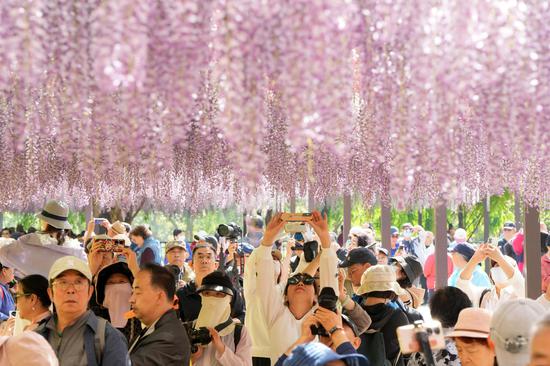
Wisteria flowers enter best viewing season in Beijing

Xi calls on Chongqing to write its chapter in Chinese modernization

China unveils Shenzhou-18 crew for space station mission

China Space Day: Exploring China's Romanticism in Space
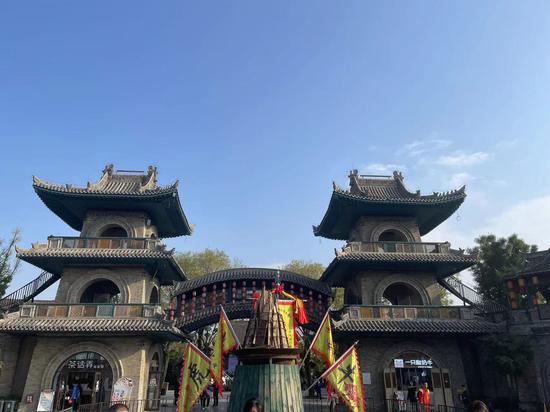
China in Diplomat's Eyes: Vibrant Xi'an city in antiquity and modernity
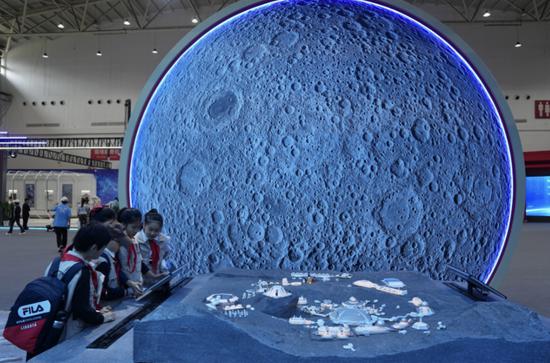
Space Day of China celebrated with exhibitions

Lhasa welcomes peak tourism season
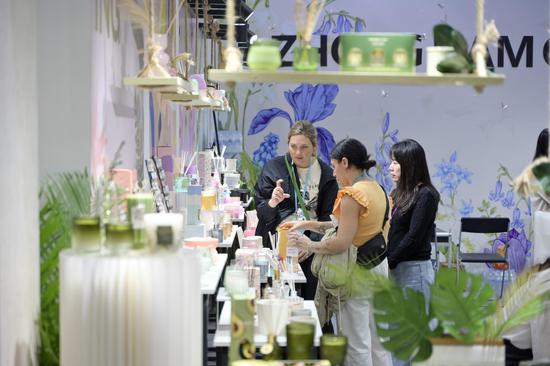
Second phase of the 135th Canton Fair opens in Guangzhou

In Numbers: Reading in the digital age
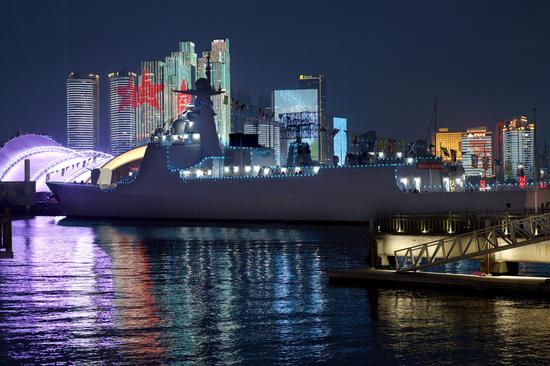
Qingdao illuminated in celebration of 75th founding anniversary of Chinese PLA navy
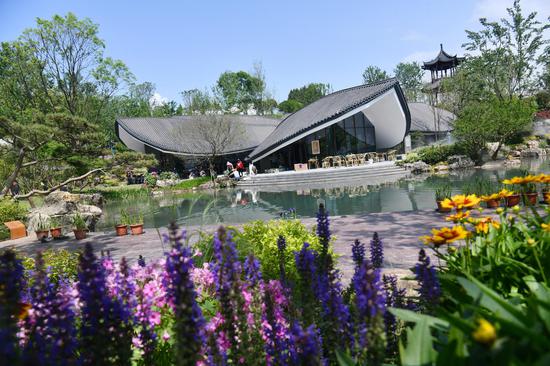
Preview of International Horticultural Exhibition 2024 Chengdu

Rongshan Yangtze River Bridge connected in Sichuan

Chinese PLA navy celebrates 75th founding anniversary
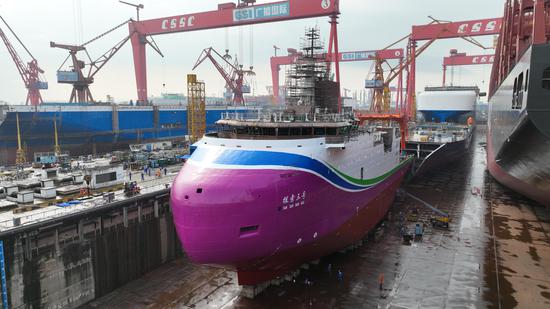
China's first deep-sea multi-functional vessel launched in S China
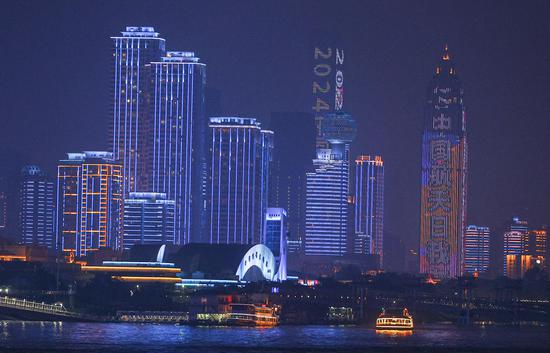
Light show staged to mark 9th Space Day of China in Wuhan
Most popular in 24h, more top news.
- China's badminton stars reclaim global supremacy
- Chinese women's badminton takes home Uber Cup for 16th time
- Guangdong Province begins geological hazard investigation
- Automation adds new flavors to catering biz
- U.S. should immediately stop indulging separatist activities in Taiwan
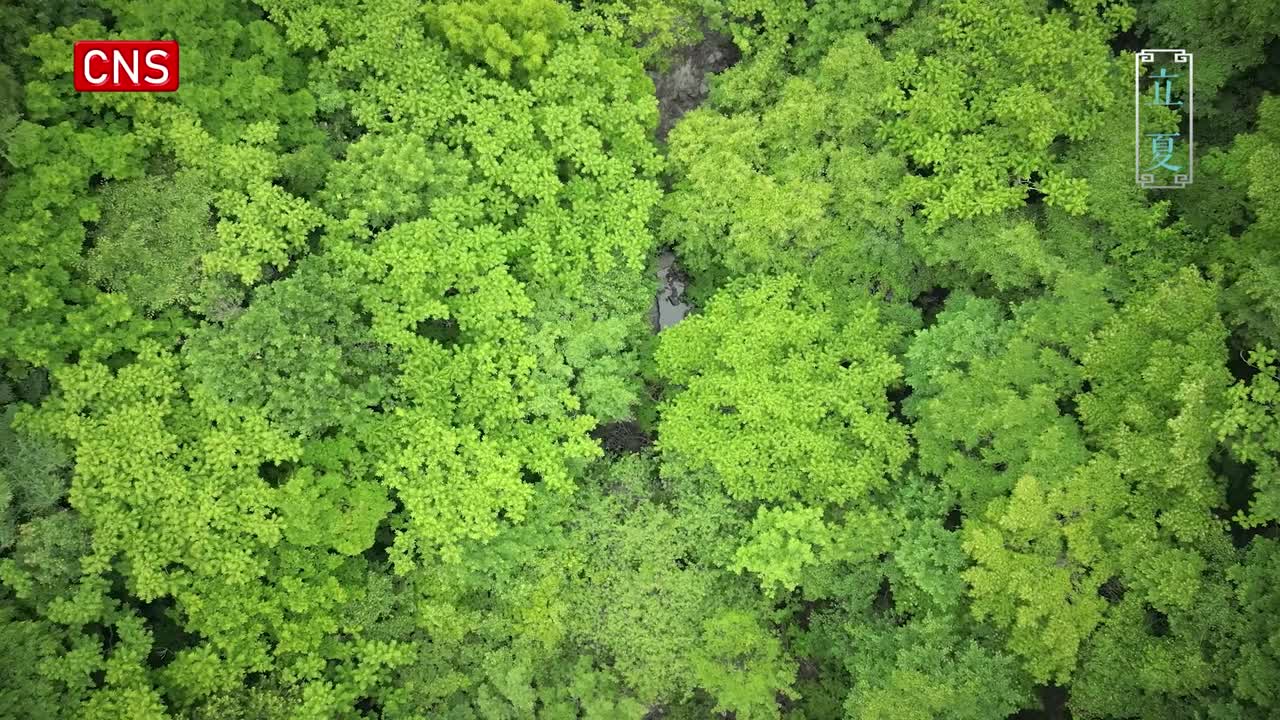
Seasons Through Birds' Eyes | Lixia

Insights丨Erik Solheim: China's industrial ecosystem and highly-educated working class promote strong economic growth

- Economic Watch: Outbound travel boom mirrors China's consumption vibrancy
BEIJING, May 7 (Xinhua) -- During the just-concluded May Day holiday, global tourist destinations attracted Chinese holidaymakers in their droves, displaying the increasing power of China's consumption engine.
Bookings for travel services from Chinese tourists during the five-day holiday from May 1 to 5 saw nearly 100 percent growth on the basis of a rapid rebound last year, according to a report from Fliggy, one of the country's leading travel platforms.
Overseas hotel booking volume rose about 100 percent year on year, while the booking value of overseas car rentals surged three times year on year, said the report.
China witnessed a boom of international cruise passenger trips in the holiday after the rapid recovery of cruise ships, with the bookings skyrocketing over 15 times from the previous year, it said.
Chinese tourists traveled to nearly 200 countries and regions around the world during the holiday, covering over 3,000 cities, data from online travel agency Trip.com Group showed.
Hong Kong, Macao, countries in Southeast Asia, Japan and the Republic of Korea were the most popular destinations for outbound tourism, while Middle Eastern countries such as Kuwait and Saudi Arabia saw rapid growth of Chinese tourists, according to the agency.
As China's economic outlook remains positive and policy measures aimed at stimulating consumption gradually take effect, the country's outbound travel has seen strong recovery since the beginning of the year.
During the eight-day Spring Festival holiday in February, China's outbound tourism soared about 10 times year on year, hitting a record high in recent four years, according to Fliggy.
Starting from Spring Festival, China's inbound and outbound tourism entered the rebound fast lane, and relevant supply chain entities expect recovery to amp up, said the Ctrip Research Institute.
In 2024, Chinese tourists' consumption during outbound travel will be more diversified, and the integration of outbound sightseeing with demands for concerts, sports events and medical care will become more popular, according to a report from the travel platform LY.com.
The booming outbound travel rush is a testament to China's bolstering consumption, which makes a strong contribution to domestic demand and overall economic growth.
According to the National Bureau of Statistics (NBS), the per capita disposable income of Chinese residents reached 11,539 yuan (about 1,625.17 U.S. dollars) in the first quarter of the year, with per capita consumer spending hitting 7,299 yuan.
Great Wall Securities analyst Jiang Fei noted that in the first quarter, the enthusiasm for travel and tourism among residents has driven consumption in related industries.
To further unleash the potential of outbound tourism, China has signed mutual visa-free agreements with several countries this year. Also, the country's international flight capacity has also been increased.
Wang Guanhua, spokesperson for the NBS, emphasized the importance of consumption in stimulating and expanding domestic demand.
"China has an ultra-large consumer market with a population of over 1.4 billion," Wang said. "The potential for consumption is vast, and its resilience is our greatest strength and source of confidence." Enditem
Go to Forum >> 0 Comment(s)
Add your comments....
- User Name Required
- Your Comment

IMAGES
COMMENTS
Tourism boom for Saudi Arabia with 58% growth in arrivals in 2023, ranks 2nd globally. The Kingdom saw a 58 percent growth in tourist numbers up to the end of July, according to the Ministry of ...
Historical highs in tourism spending. The revenue from tourism was comprised of 63.1 billion Saudi Riyals (U$16S.8 billion) from domestic tourism and 86.9 billion Saudi Riyals (US$23.2 billion) from inbound tourism. The inbound sector saw a 142 percent increase in tourist numbers and a 132 percent rise in spending, compared to the first half of ...
Saudi tourism targets This accomplishment, the ministry said, significantly surpassed the target set for 2030, positioning Saudi Arabia as "an emerging global tourism powerhouse". According to the ministry, the Kingdom has achieved this milestone seven years ahead of the initial goal, according to the latest data.
Saudi Arabia witnessed a huge tourism increase in the first six months of the year, with record numbers of international visitors and a total spend of SR150bn ($40bn), according to official statistics.. The Ministry of Tourism has announced the preliminary data for the first half of 2023, which demonstrates the continuous achievements following 2022's remarkable growth within the tourism sector.
Saudi tourism boom. This historic surge in spending is part of a series of ongoing successes in the Kingdom's tourism sector. In 2023, the Kingdom led the United Nations Tourism List for the growth rate of international tourists compared to 2019, achieving a remarkable 56 per cent increase in tourist arrivals.
Tourism boom in Saudi Arabia, spending reaches $40 billion in 2023. This showcases a growth rate of 42.8%, as compared to 2022. Until some years ago, Saudi Arabia was not the top-of-the-mind destination one thought of for historical exploration or luxurious leisure. But now, it is investing heavily in tourism and travel; the target is 10% of ...
26 Feb 2024. In a testament to its strategic vision and robust sector growth, the Kingdom of Saudi Arabia has welcomed over 100 million tourists, marking a significant milestone in its journey to become a global tourism powerhouse. In an exceptional achievement, the Kingdom of Saudi Arabia has welcomed over 100 million tourists, a milestone ...
GCC; Tourism boom: Saudi Arabia's international visitor numbers soar 142%. More tourists than ever before are visiting the Kingdom of Saudi Arabia as inbound visitor numbers have more than ...
Entertainment and media fueling the tourism boom Saudi Arabia has also embraced entertainment and culture to attract visitors. ... Premium Statistic Share of the GDP of the tourism sector in Saudi ...
In 2023, Saudi Arabia's visitor spending soared to $36 billion USD (SR135 billion), marking a record high and showcasing the Kingdom's booming tourism sector. In 2023, Saudi Arabia witnessed an unprecedented surge in spending by visitors from abroad, totaling $36 billion USD (SR135 billion), as reported by the Saudi Central Bank (SAMA).
The Saudi Ministry of Tourism revealed on Tuesday, February 27, that 2023 saw a remarkable influx of tourists, reaching 106.2 million. This marks a 56 percent increase from the numbers recorded in ...
Saudi Arabia celebrated a monumental tourism milestone as it welcomed over 100 million tourists in 2023, surpassing Vision 2030 expectations seven years ahead of schedule. This extraordinary achievement, acknowledged by the UN World Tourism Organization, underscores the Kingdom's ascent as a leading force in the global tourism landscape.
RIYADH: Saudi Arabia has been ranked second globally in terms of tourist arrivals during the first seven months of 2023, the Saudi Press Agency reported on Tuesday. The Kingdom saw a 58 percent growth in tourist numbers up to the end of July, according to the Ministry of Tourism, compared to the same period in 2019. The data was sourced last month from the UN World Tourism Organization and ...
saudi tourism boom Short leisure breaks are set to drive a 38% increase in visitors to KSA by 2024, says new ATM research. Visitors to Saudi Arabia are predicted to increase 38% from 15.5 million in 2019 to 21.3 million by 2024, according to new research by Colliers International , commissioned by Arabian Travel Market (2020) , which takes ...
Saudi Arabia recorded tourist revenue of SAR 37 billion (almost USD 10 billion) as the sector witnessed a massive surplus due to an unprecedented travel boom in the Kingdom. According to figures released by the Ministry of Tourism , Saudi Arabia welcomed 7.8 million visitors in the first quarter of this year.
The tourism boom also brings a wave of cultural interchange. The conservative nation is now exposed to various global perspectives, which could be a step toward more progressive societal norms. ... If managed wisely, this sea change in Saudi tourism could be a cornerstone in the country's long-term growth and stability, fundamentally altering ...
The tourism chief was using the kingdom's representation at the Middle East's largest travel and tourism exhibition in Dubai to promote a new campaign, Summer in Saudi Arabia. The campaign will officially launch next week and is focusing on destinations across the kingdom that are ideal for visiting in the hotter months of the year.
Saudi tourism boom. The data was sourced from the UNWTO World Tourism Barometer, published by the United Nations World Tourism Organization (UNWTO) in September of the current year. This is a continuation of Saudi Arabia's success in the tourism industry and its position as a global leader in this field.
Saudi Arabia's hospitality sector is undergoing a remarkable evolution. Luxury resorts and eco-tourism initiatives are setting new standards across the country accross giga projects from NEOM to Red Sea Global.. The Saudi Boom captures this transformation, emphasizing how these developments turn the Kingdom into an attractive global destination.
Bahrain recently inked an agreement with neighbour Saudi Arabia to collaborate on attracting international visitors. Such collaborative as opposed to competitive thinking is a development that Dubai-based Nicolas Mayer, PwC's global tourism and hospitality leader, expects will one day lead to the region being viewed as a 'cluster' rather like Europe, where people visit several countries ...
Accor is one of the biggest players in growing Saudi's tourism and hospitality infrastructure. The French operator wants an additional 45 properties with more than 9,800 rooms by 2030 in Saudi.
New Projects: Explore the ground breaking infrastructure projects and urban developments that are reshaping the Saudi landscape. Tourism: Uncover the hidden gems, vibrant festivals, and natural wonders that make Saudi Arabia an exciting tourist destination. Companies: Gain knowledge about the corporate giants, emerging players, and innovative enterprises that are contributing to the nation's ...
Saudi Arabia's Diriyah Gate will soon welcome a new Anantara while other parts of the kingdom will see a boom in new hotel openings. ... We have a number of hospitality projects that we are working on with Saudi Arabia's Tourism Development Fund (TDF). Over the next 10 years, we plan to expand our presence in Saudi Arabia by adding 30 ...
Saudi tourism boom. The ministry added that this surplus was achieved due to the significant growth of incoming tourism revenues by about 225 per cent compared to the first quarter of 2022, to reach about SR37bn ($9.9bnbn), as per the Saudi Central Bank (SAMA) data.
Neom is the centerpiece of Saudi ruler Mohammed bin Salman's Vision 2030 project to diversify the Saudi economy away from fossil fuels and transform it into a luxury tourism ... boom powering ...
Saudi Arabia is opening itself up in general, encouraging more tourism. But I think that what's most important to the Crown Prince, Mohammed bin Salman, is what he can get from the United States.
Saudi Arabia's capital is set to pull back on its target to double its population by 2030 as it reconfigures plans designed to support Crown Prince Mohammed bin Salman's multi-trillion dollar ...
Chinese holidays have injected impetus into the world economy, with the just-concluded May Day holiday bringing a strong burst of tourism growth to domestic as well as overseas destinations ...
The new Saudi tourism trends report has further highlighted that among the top growing destinations in the Kingdom, AlUla is the preferred luxury option, Jazan and Tabuk are winter favourites and Abha is a popular destination for families to spend the summer break.. Riyadh, Jeddah, Dammam and Makkah and Madinah remain the most popular destinations in terms of room nights sold.
Hong Kong, Macao, countries in Southeast Asia, Japan and the Republic of Korea were the most popular destinations for outbound tourism, while Middle Eastern countries such as Kuwait and Saudi ...